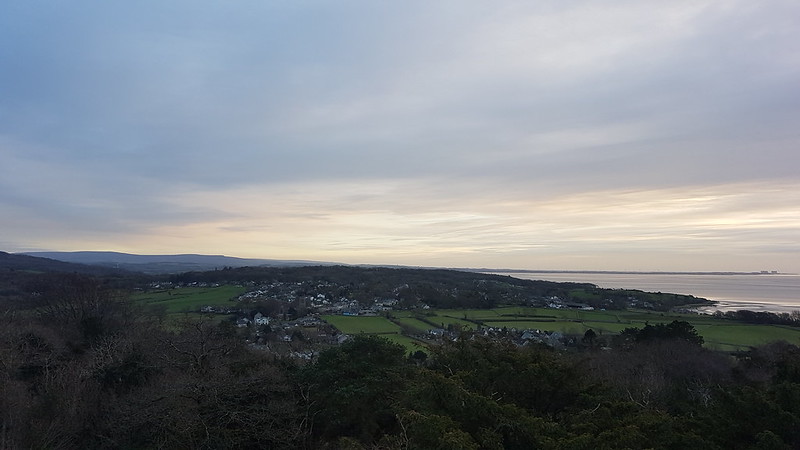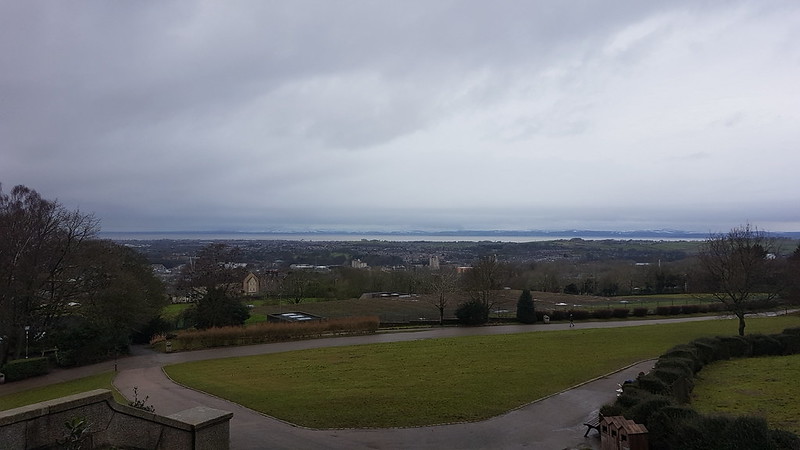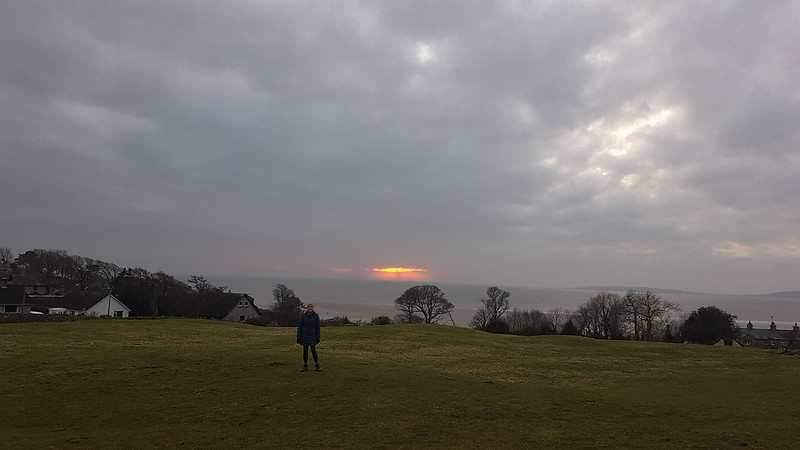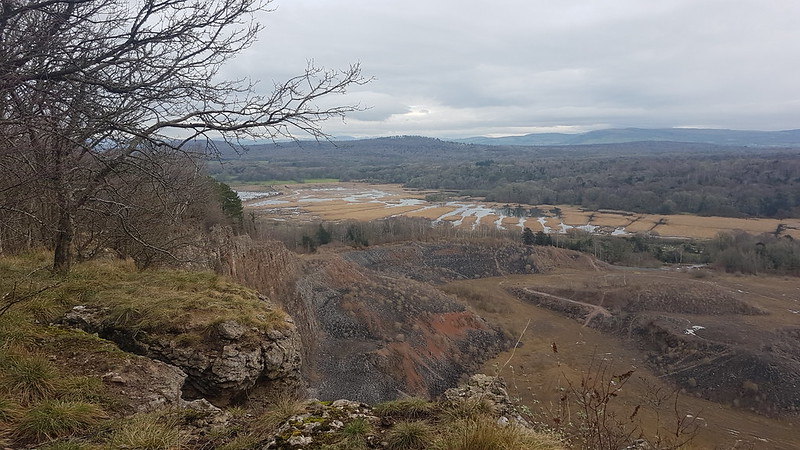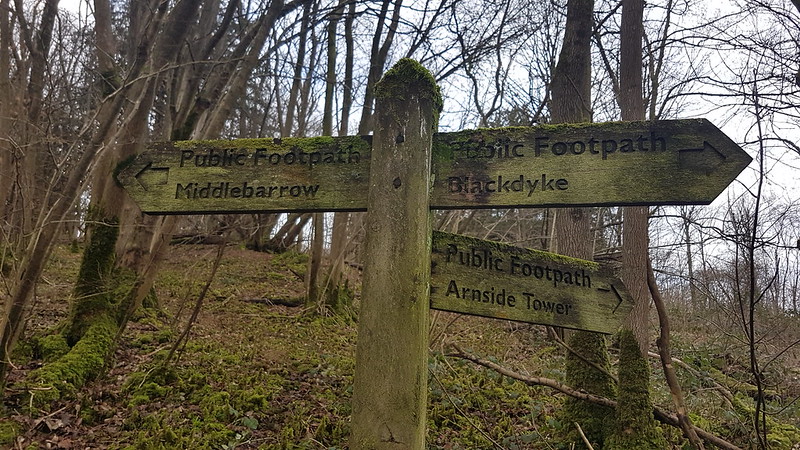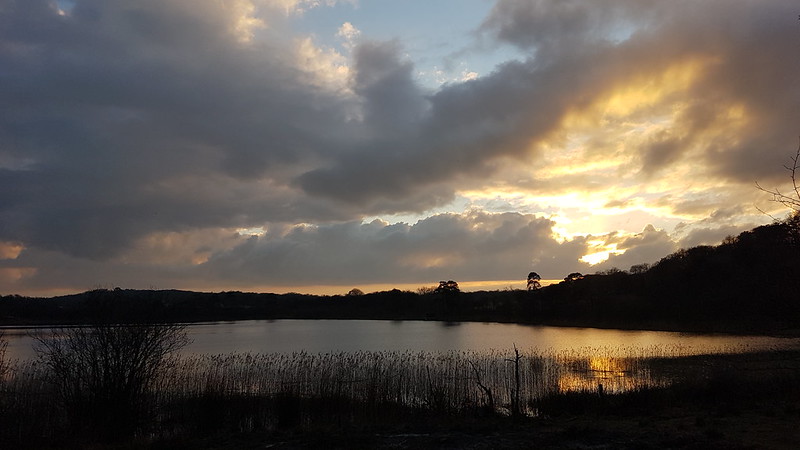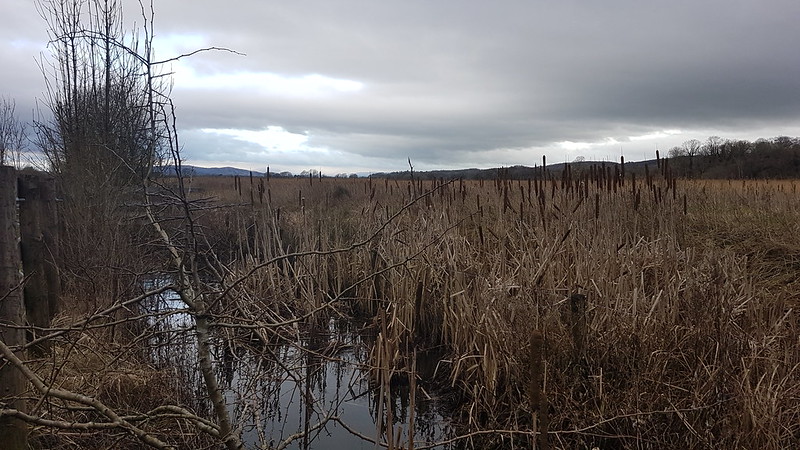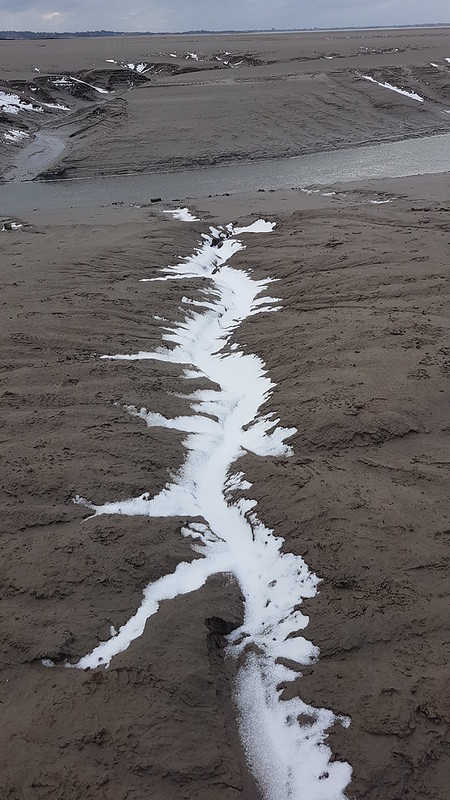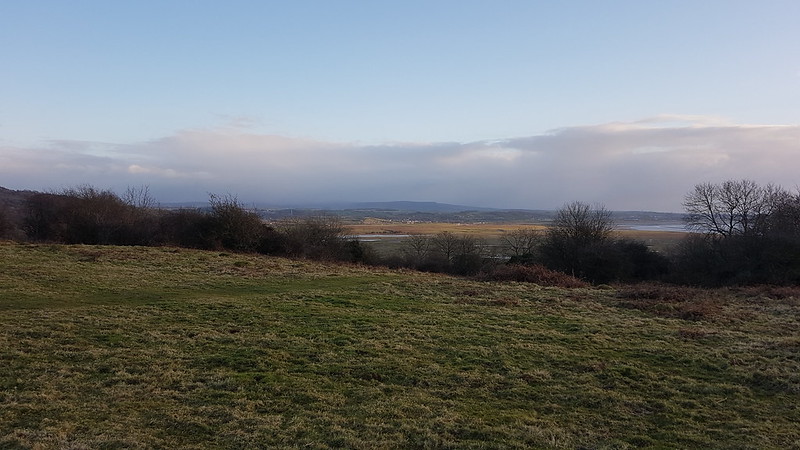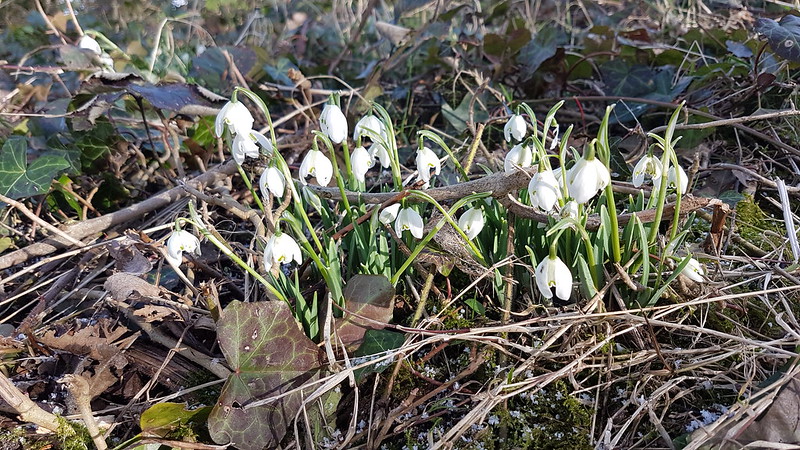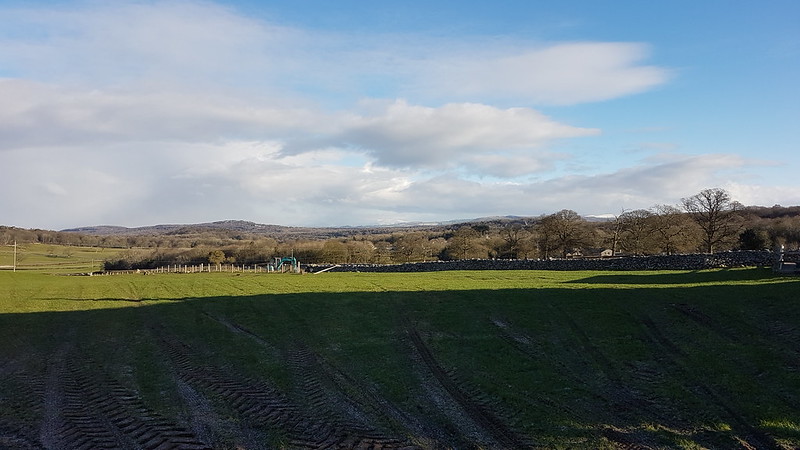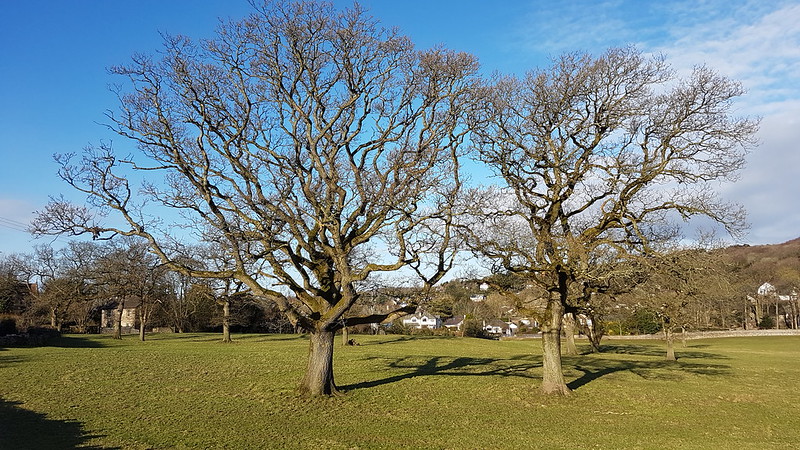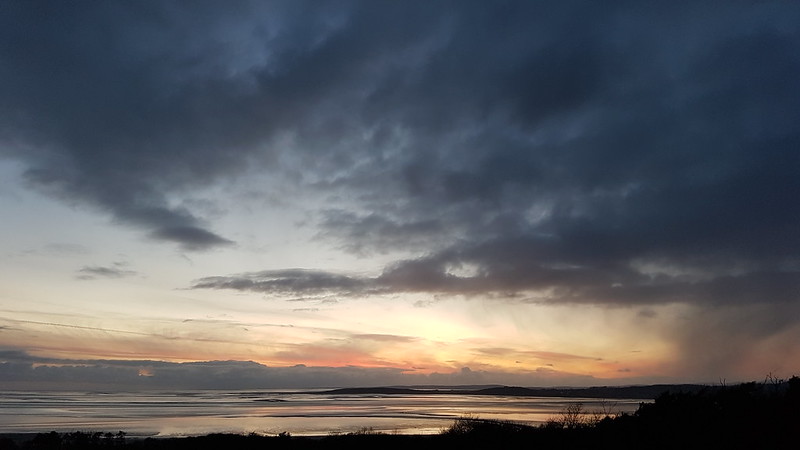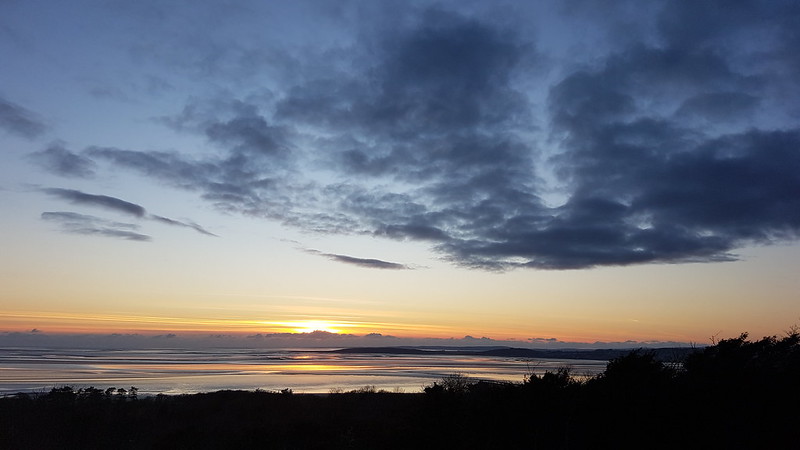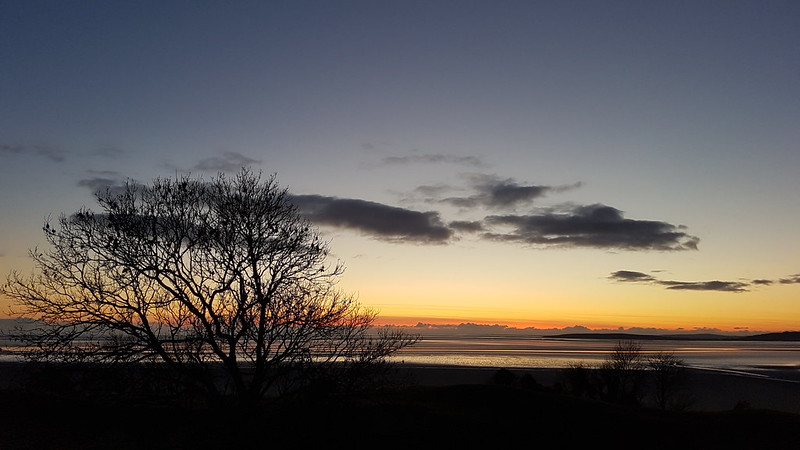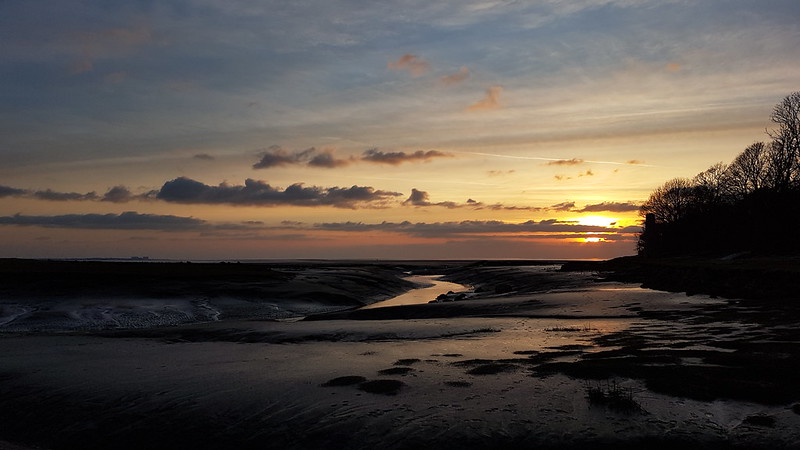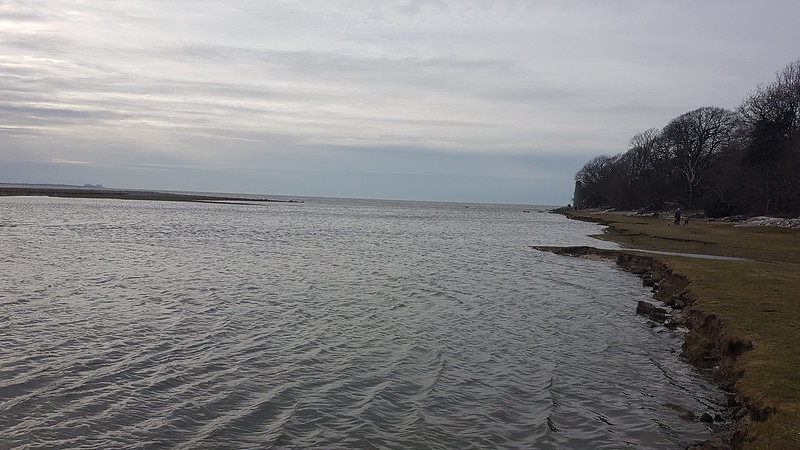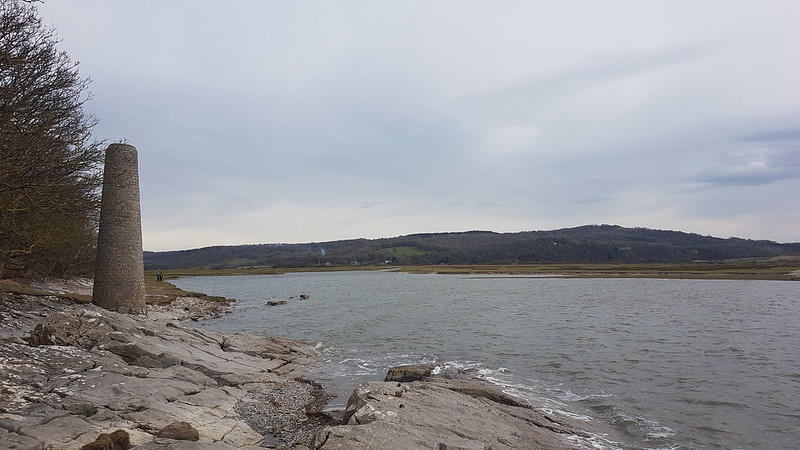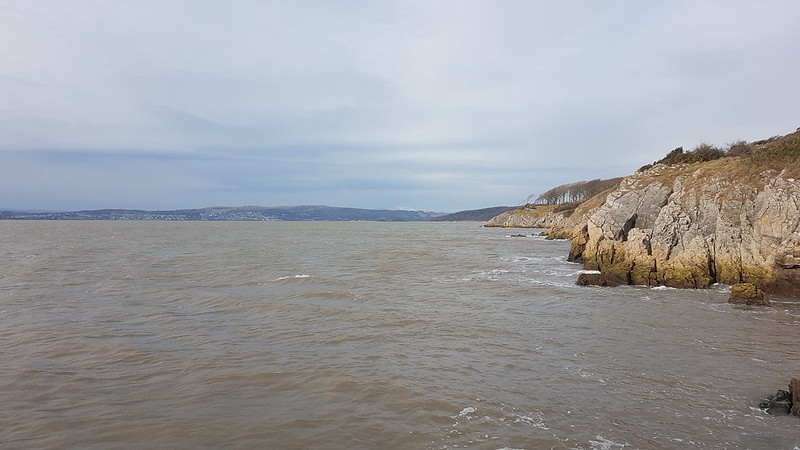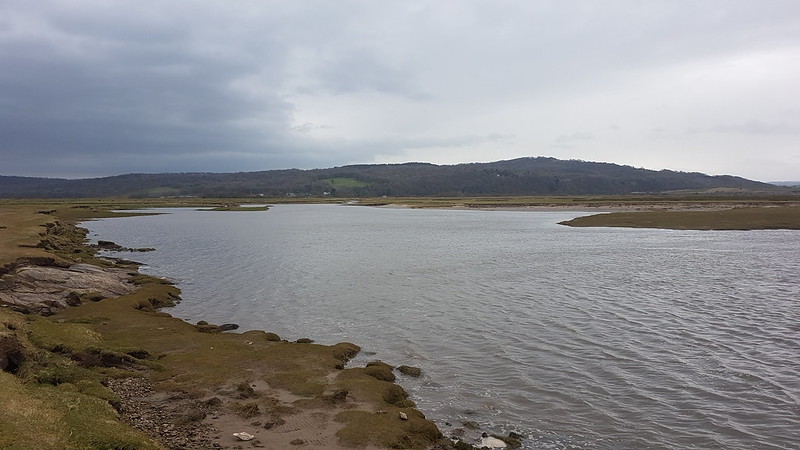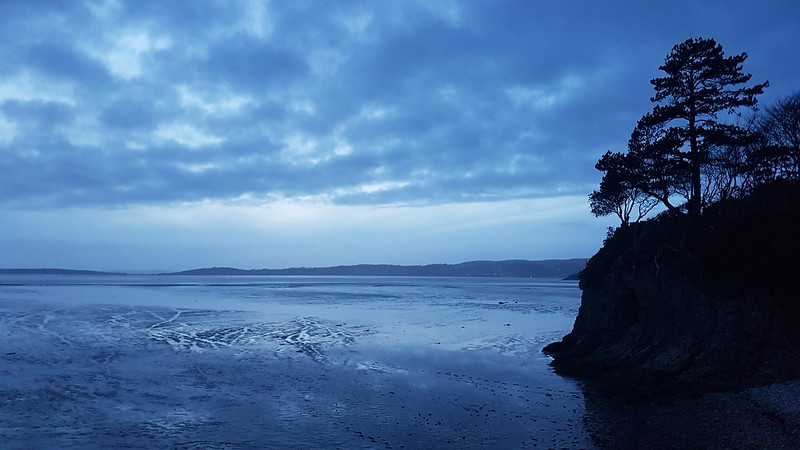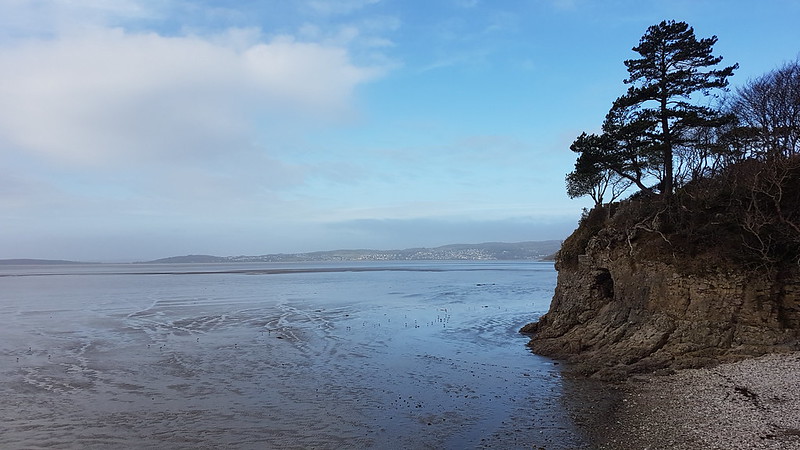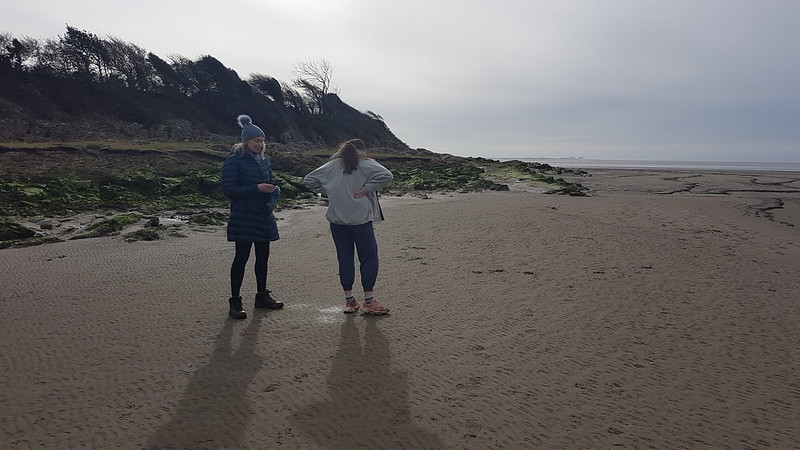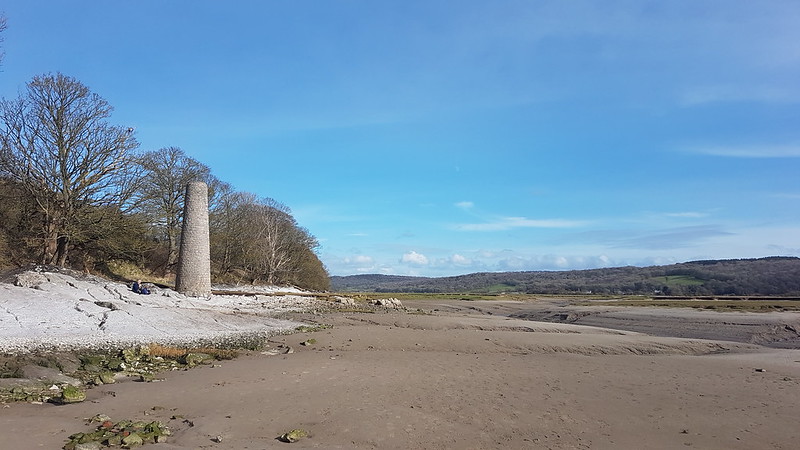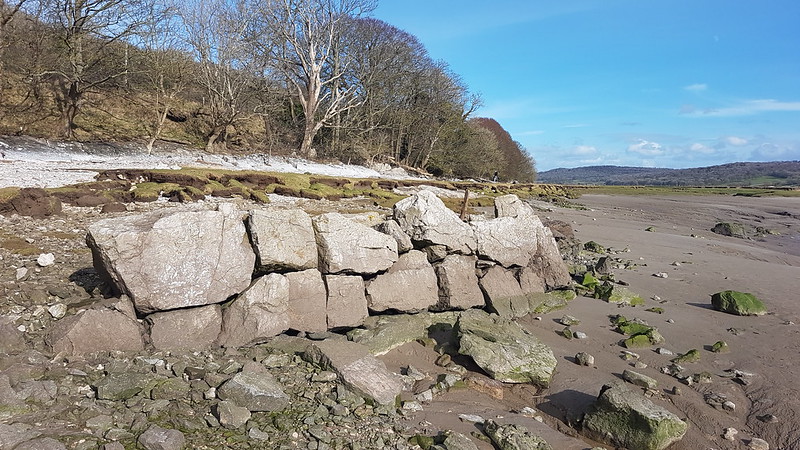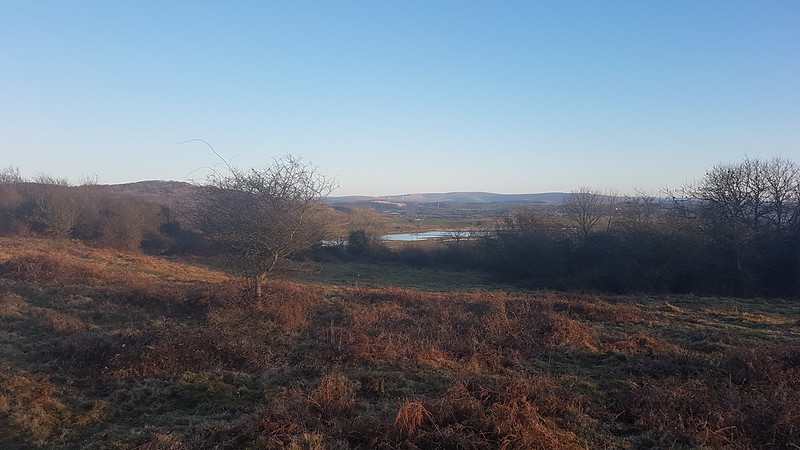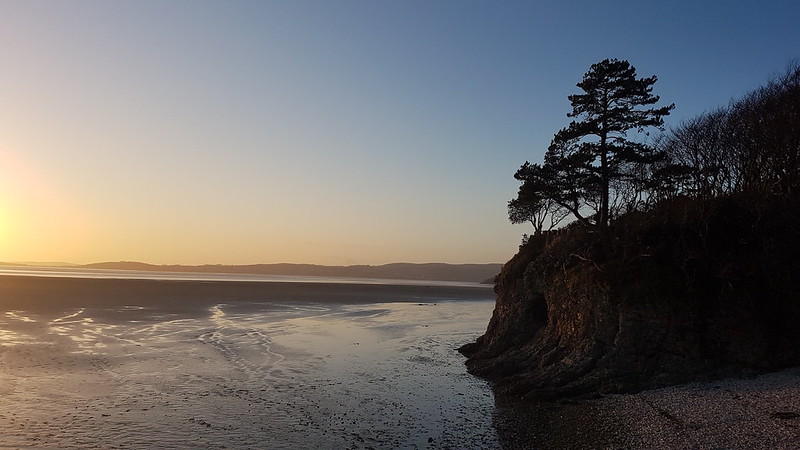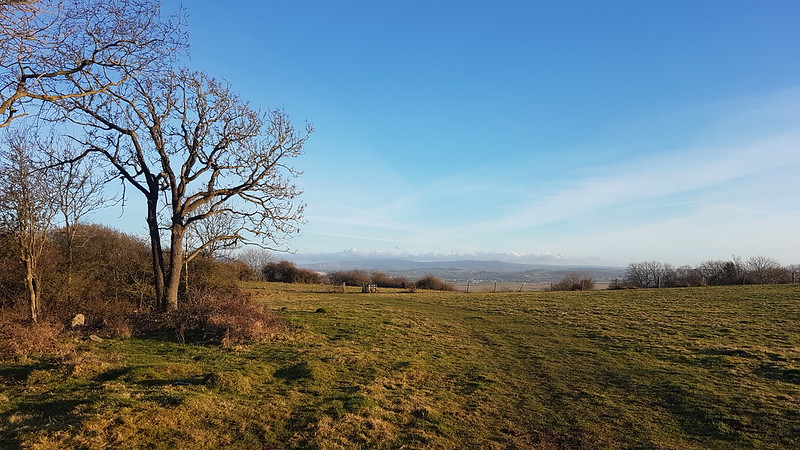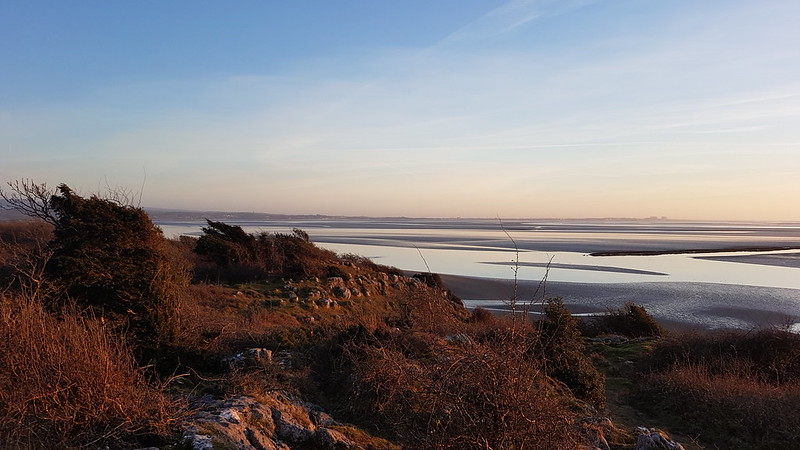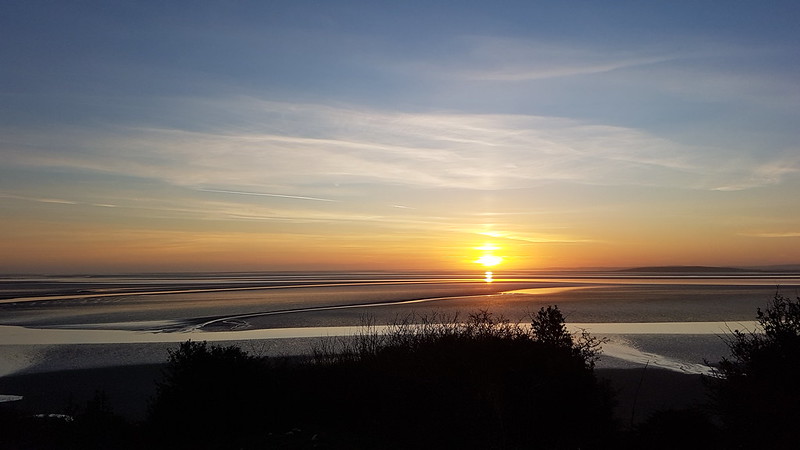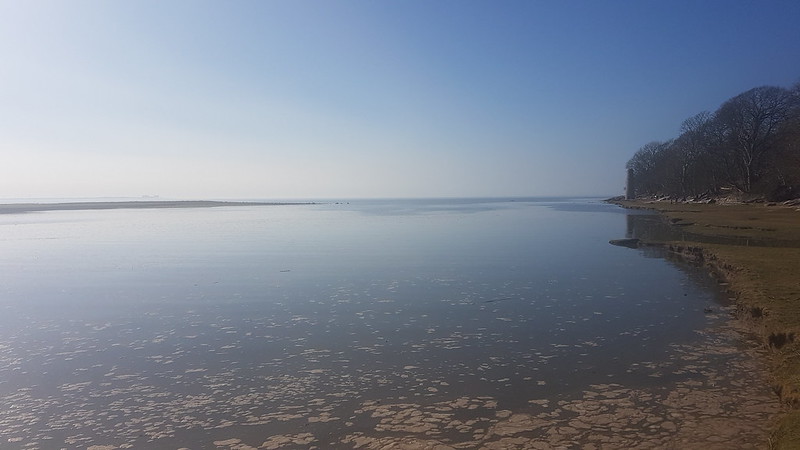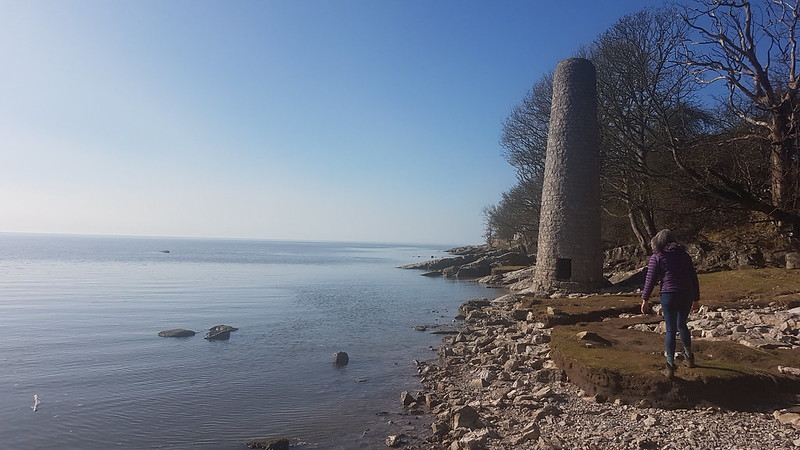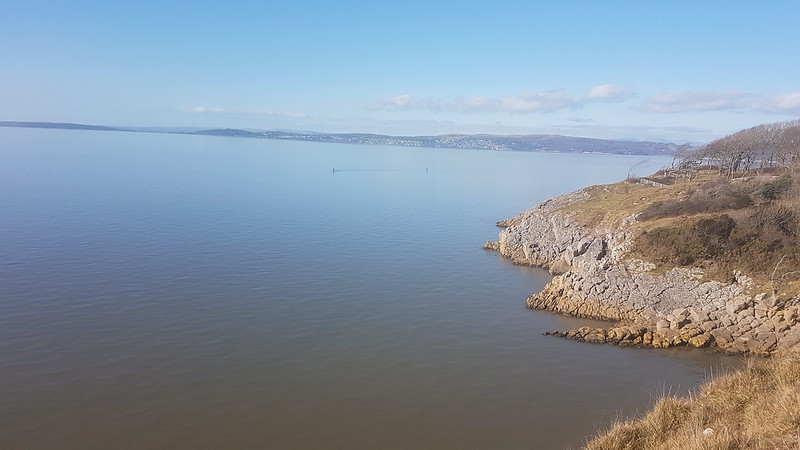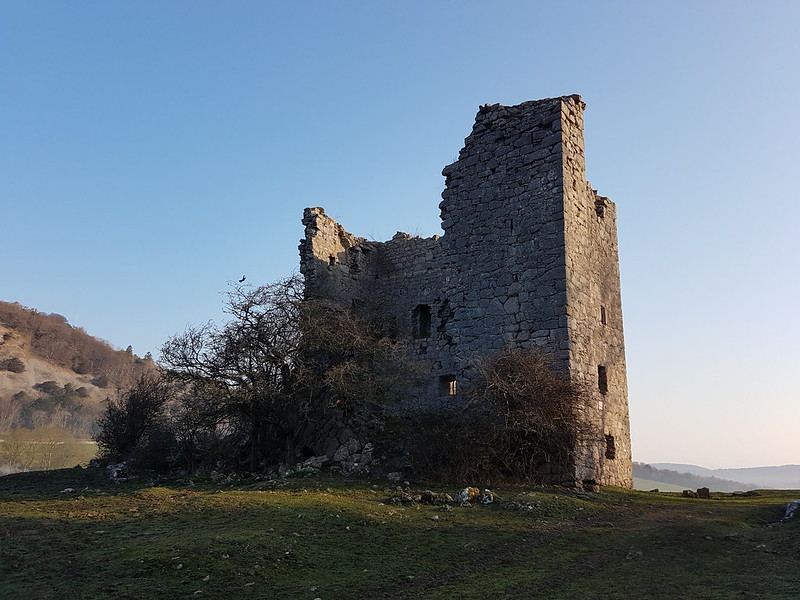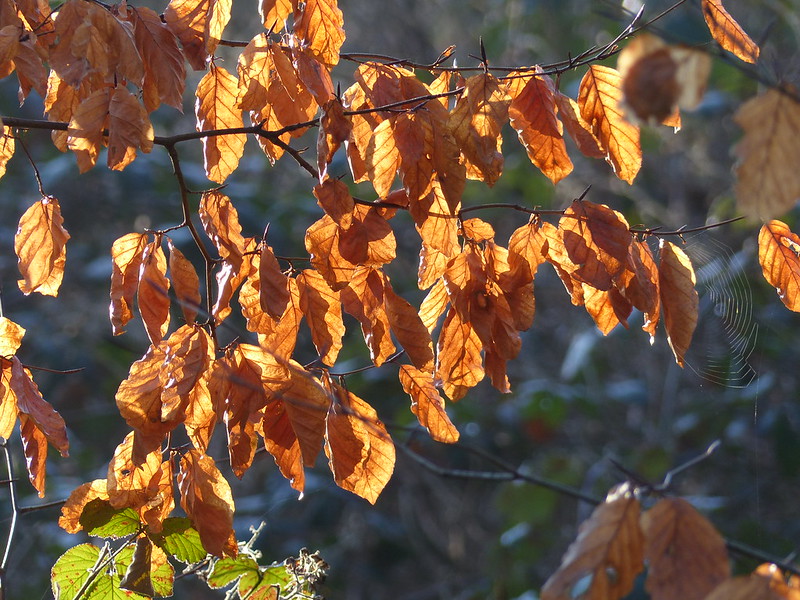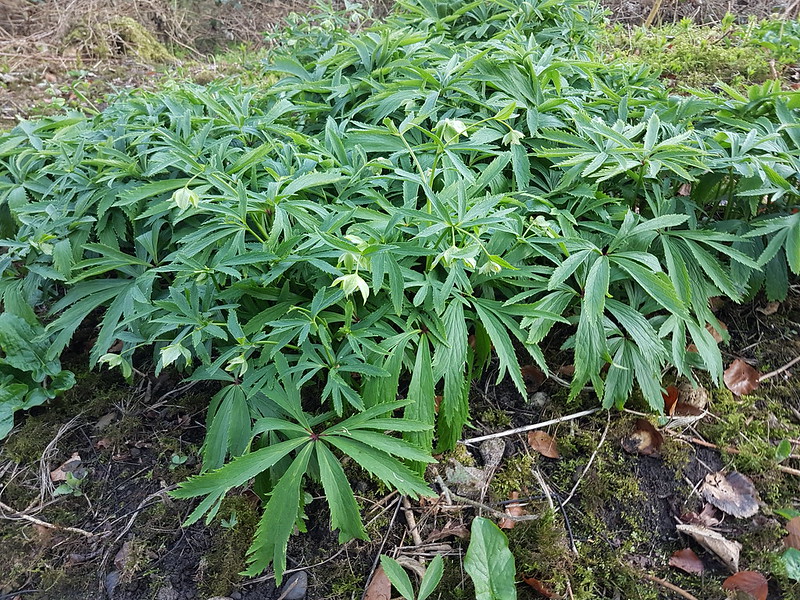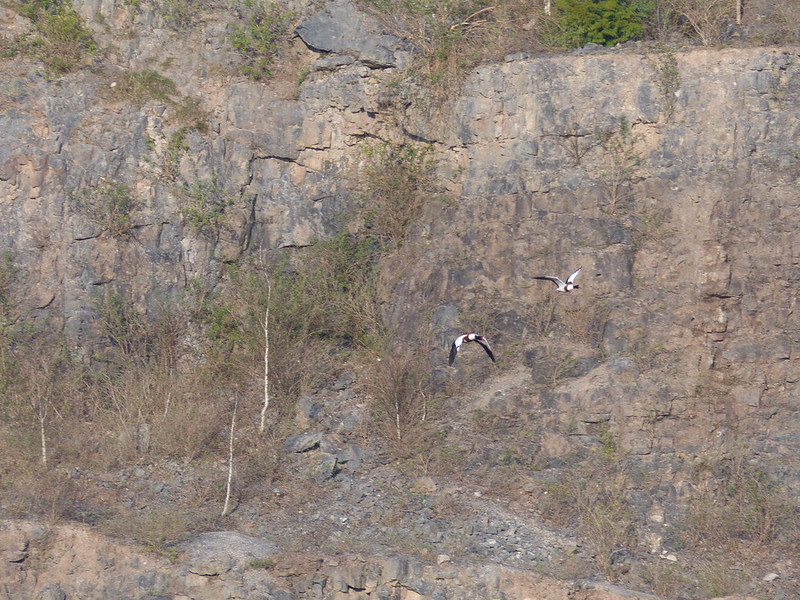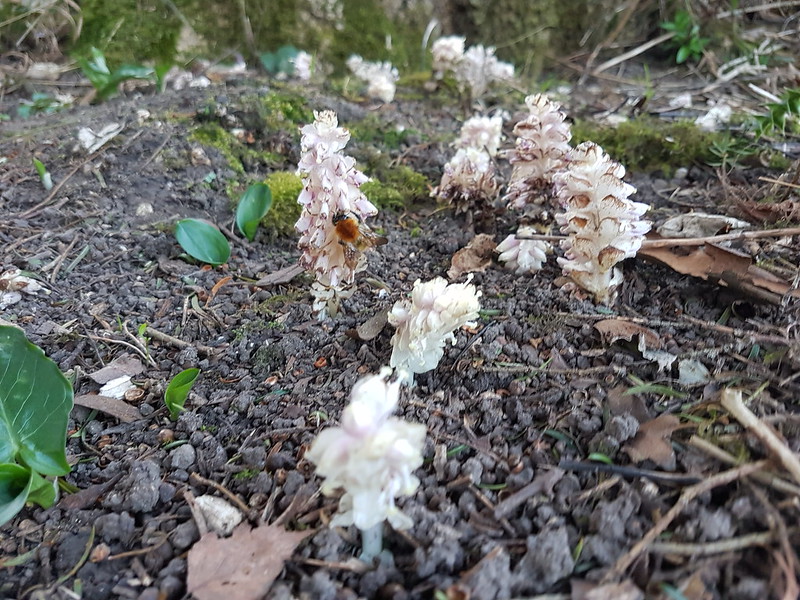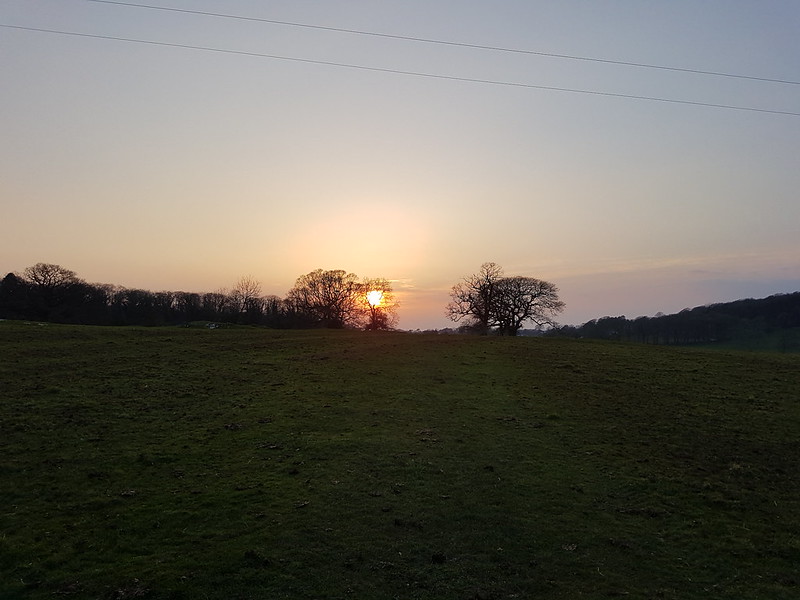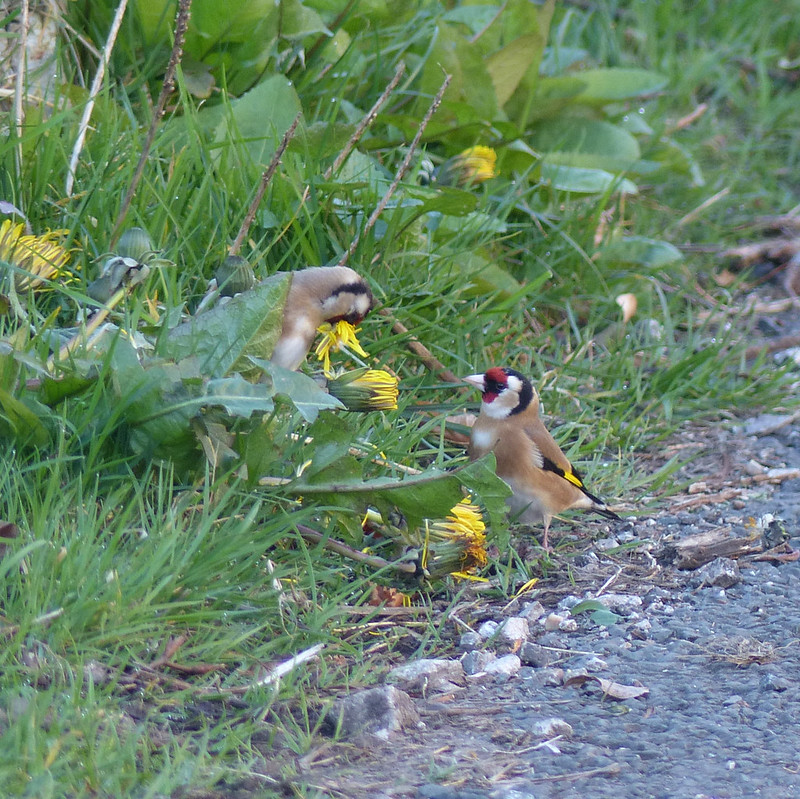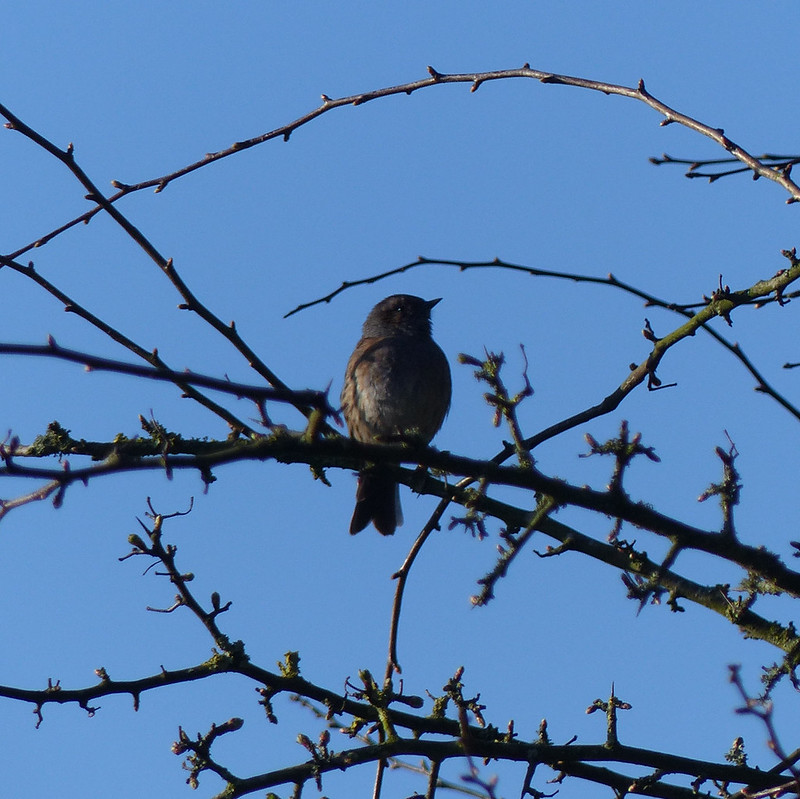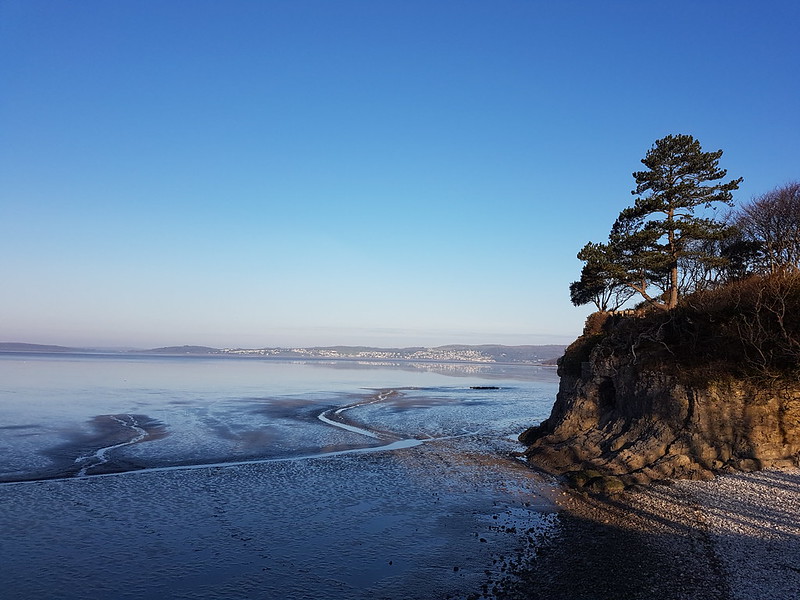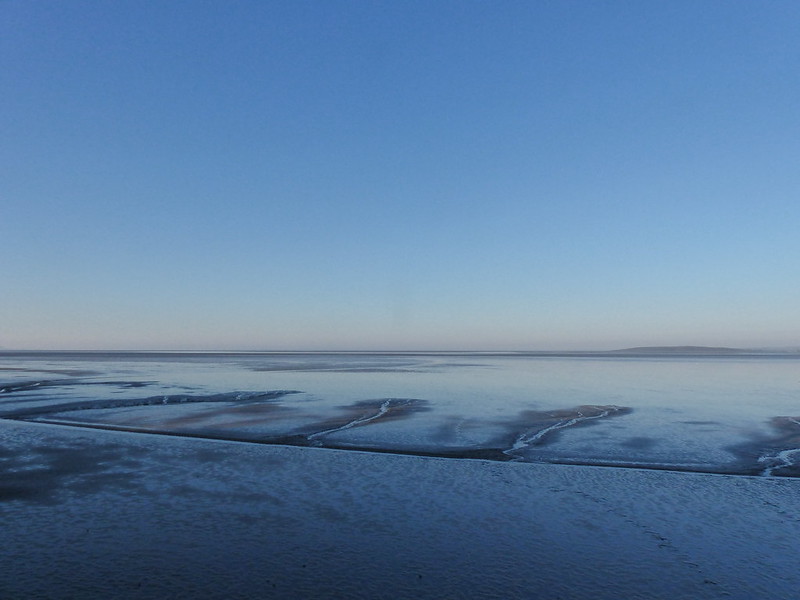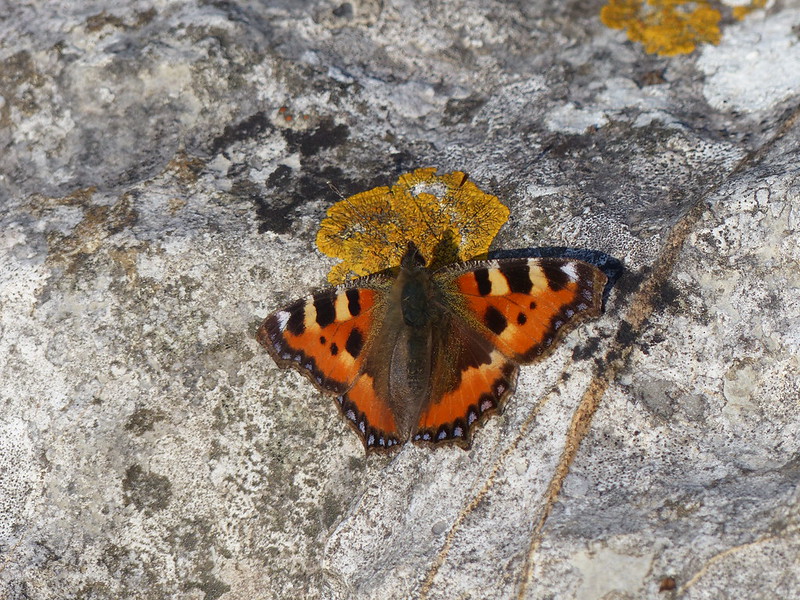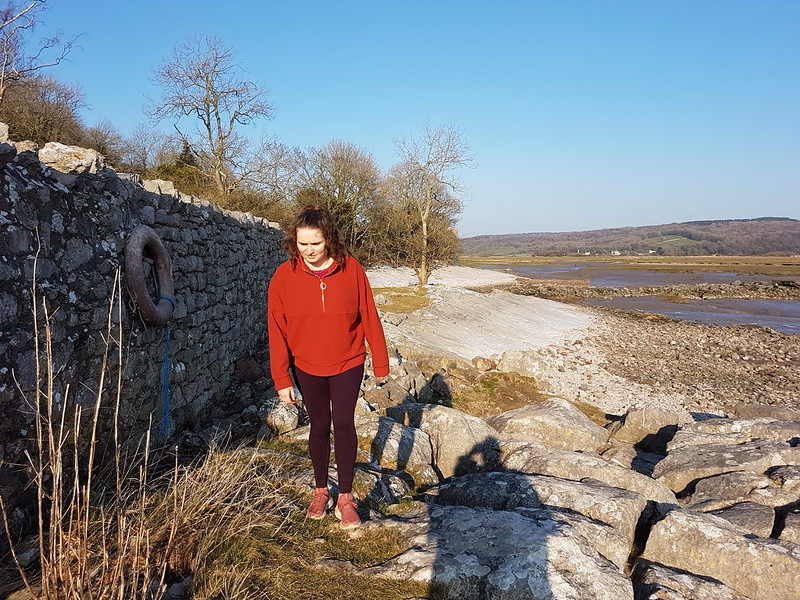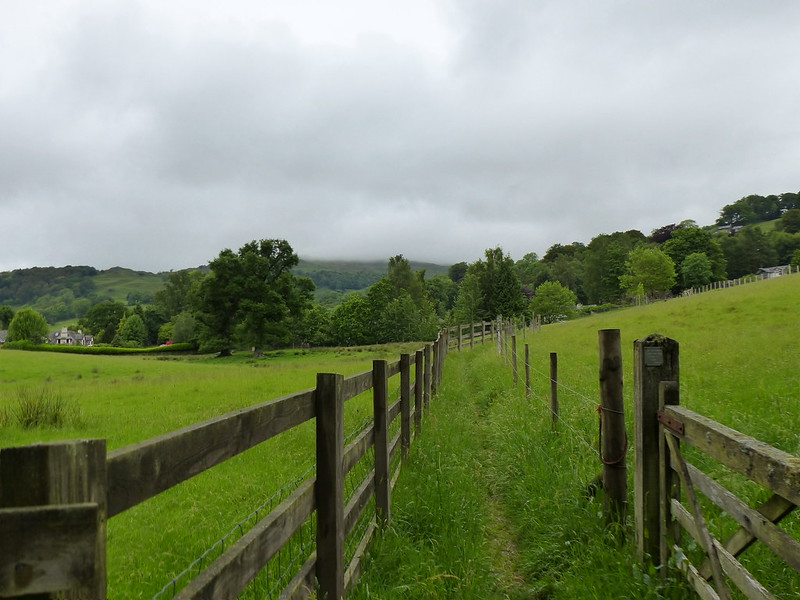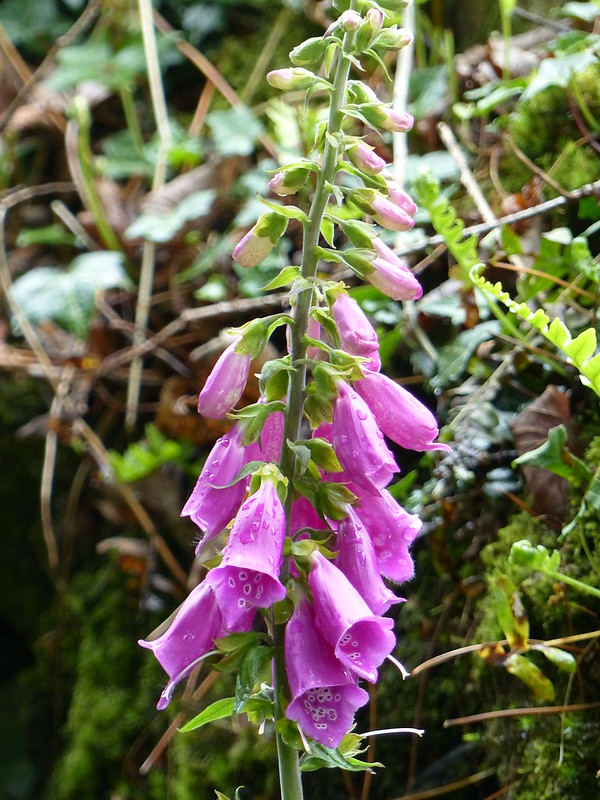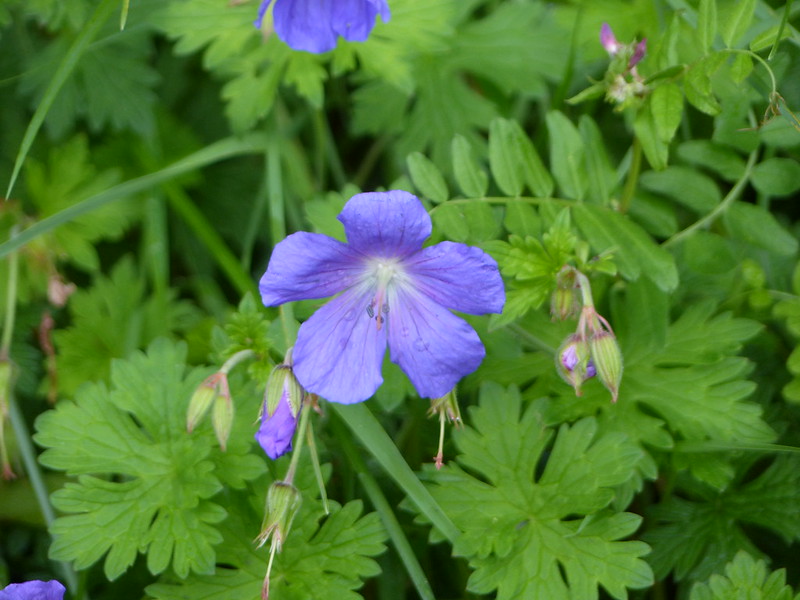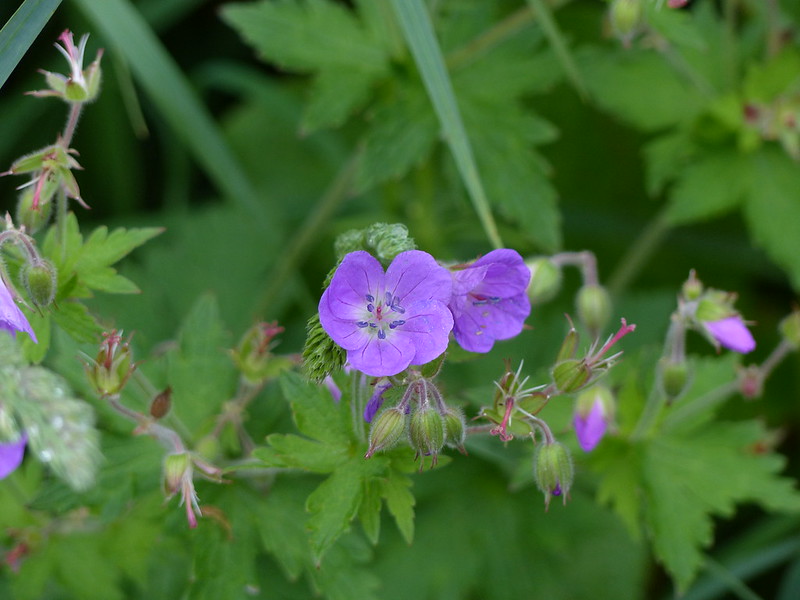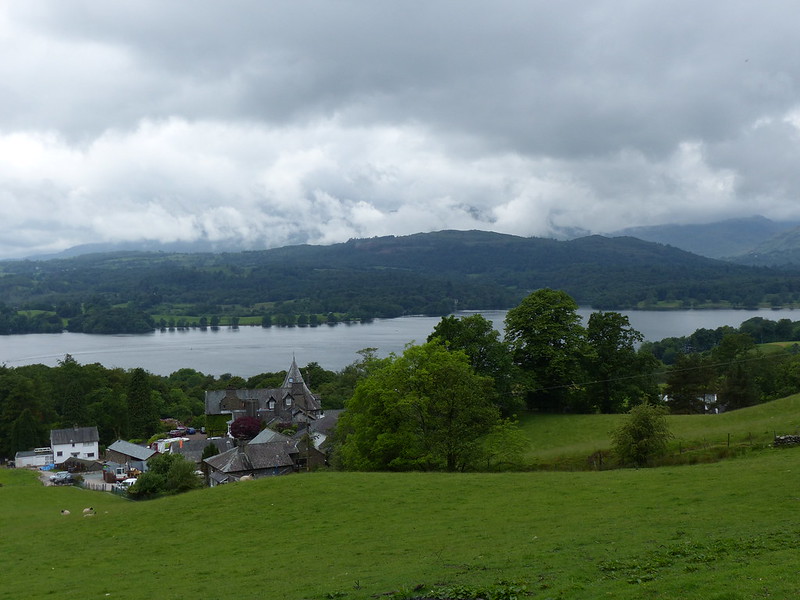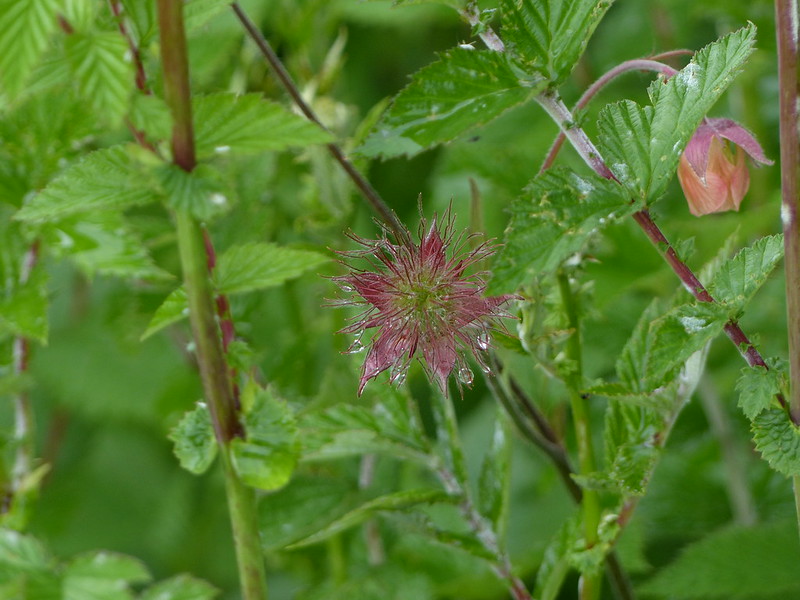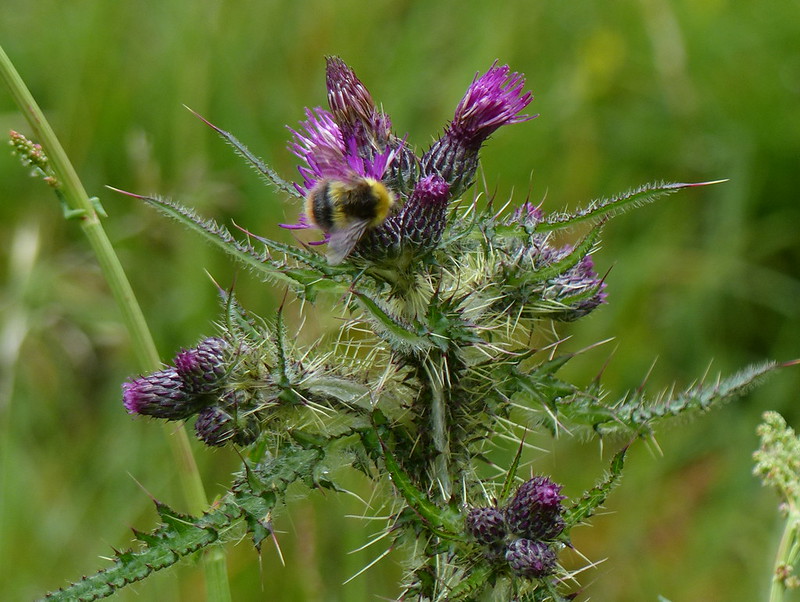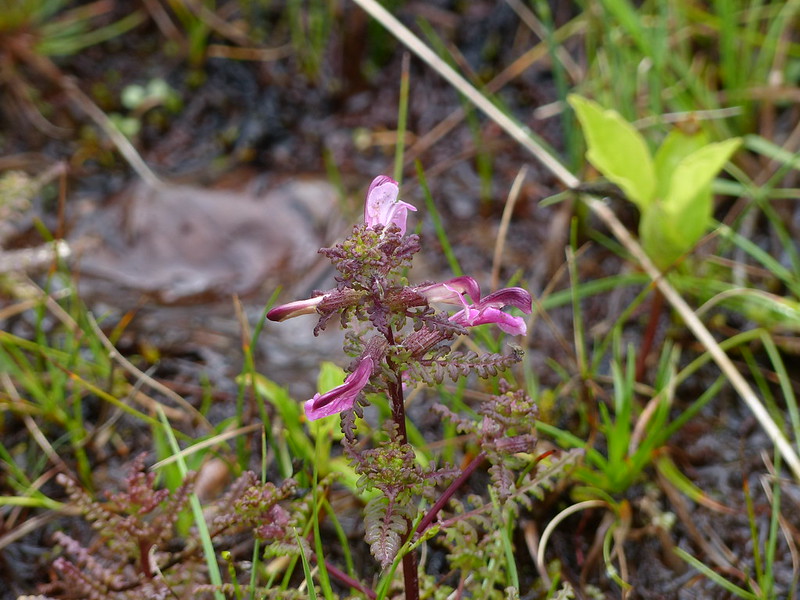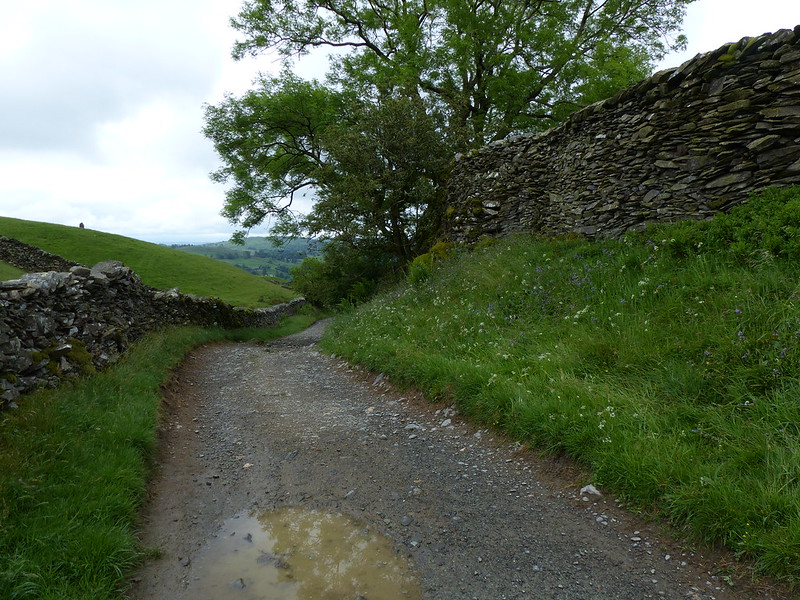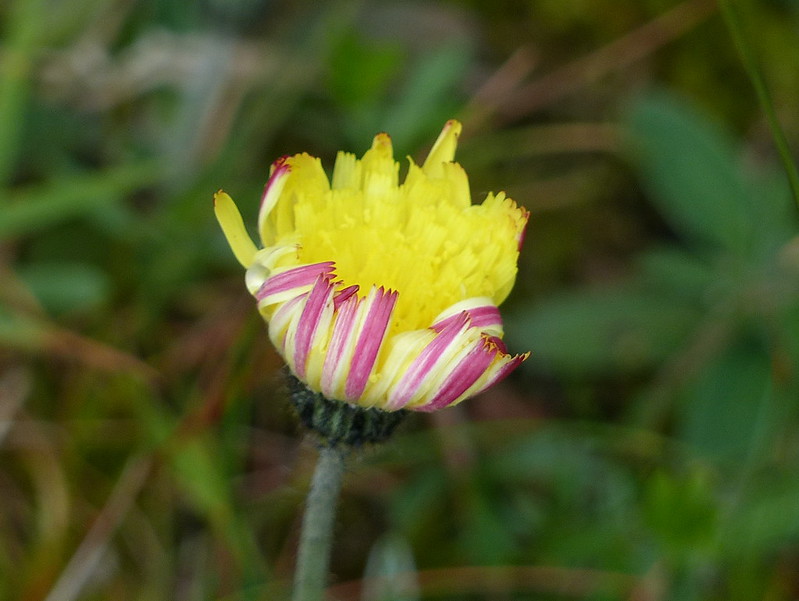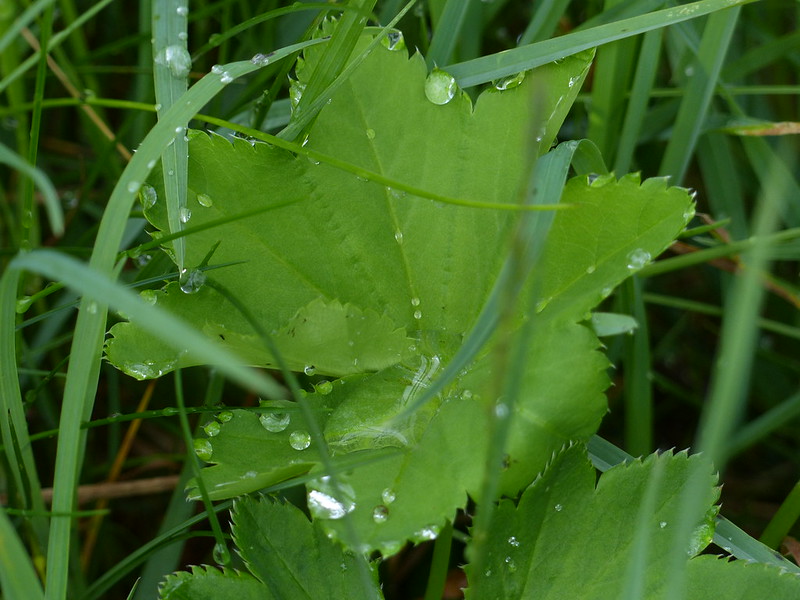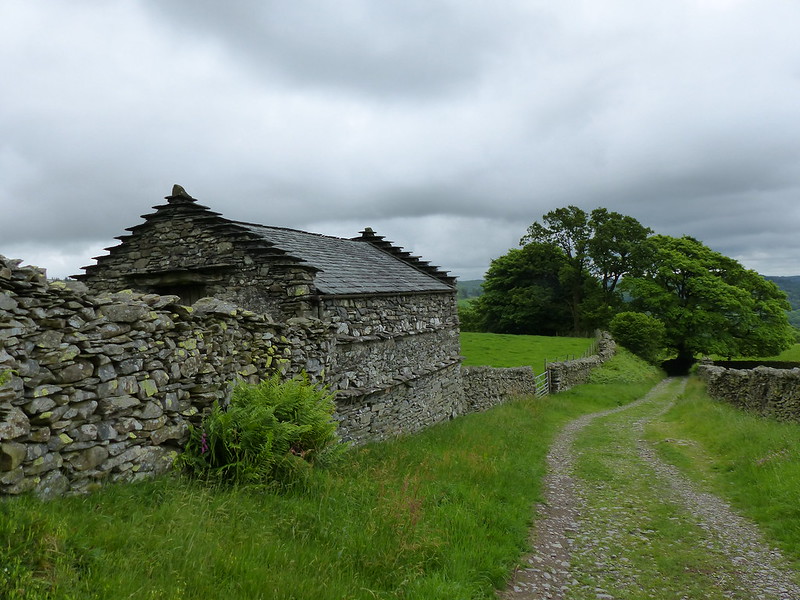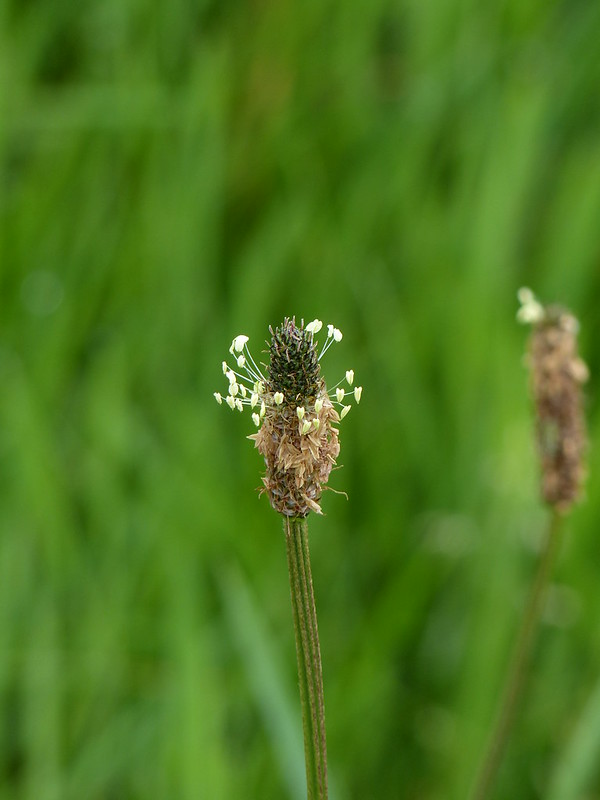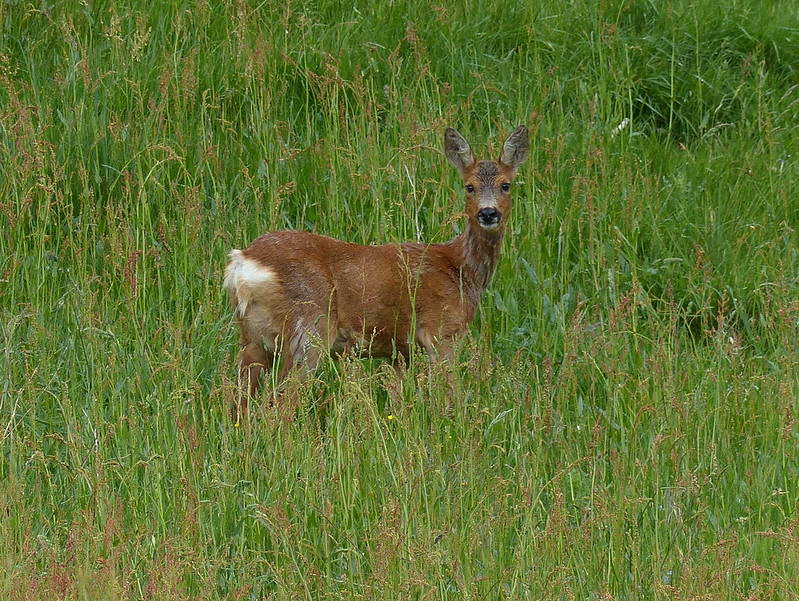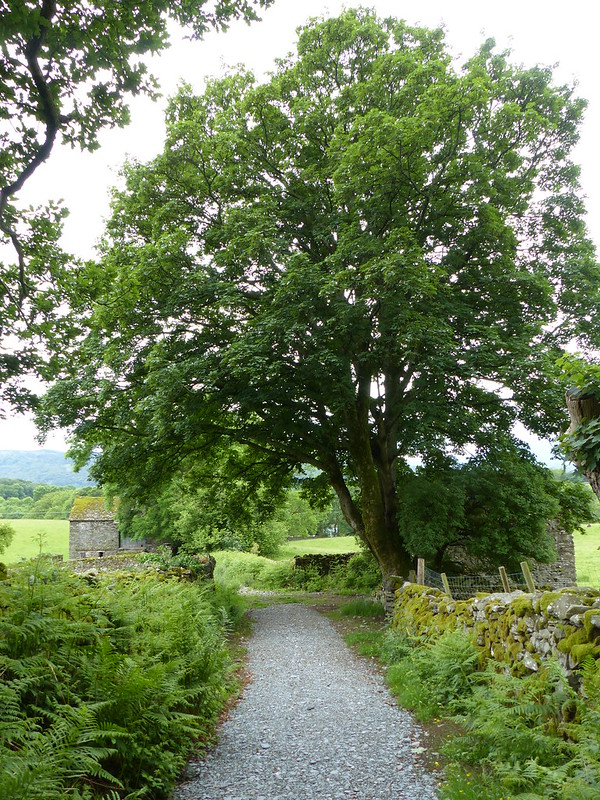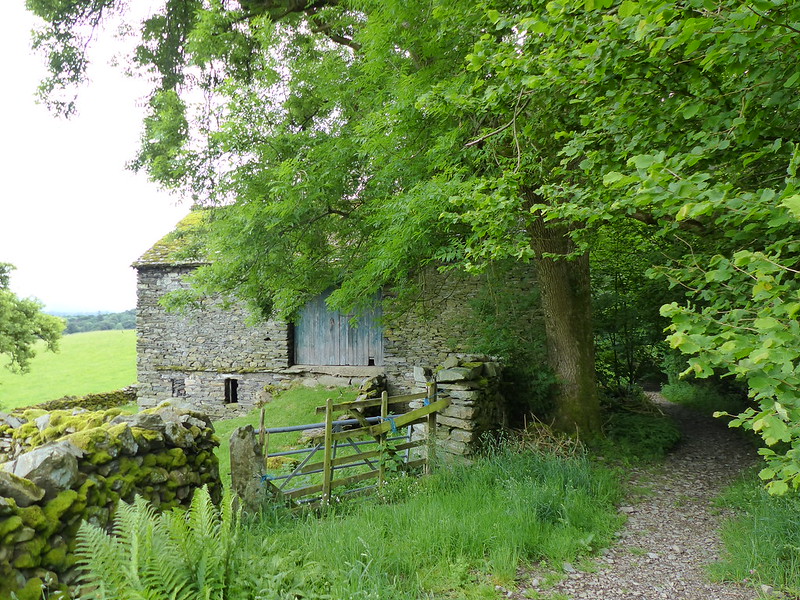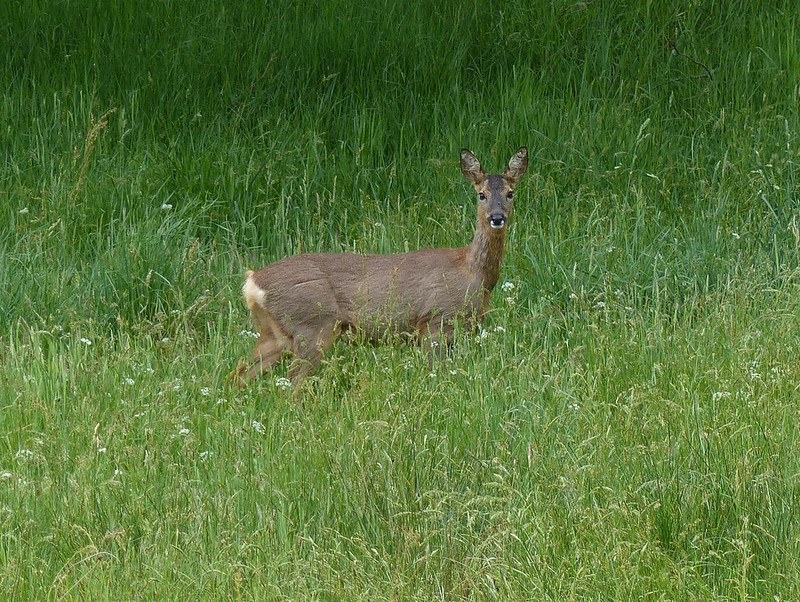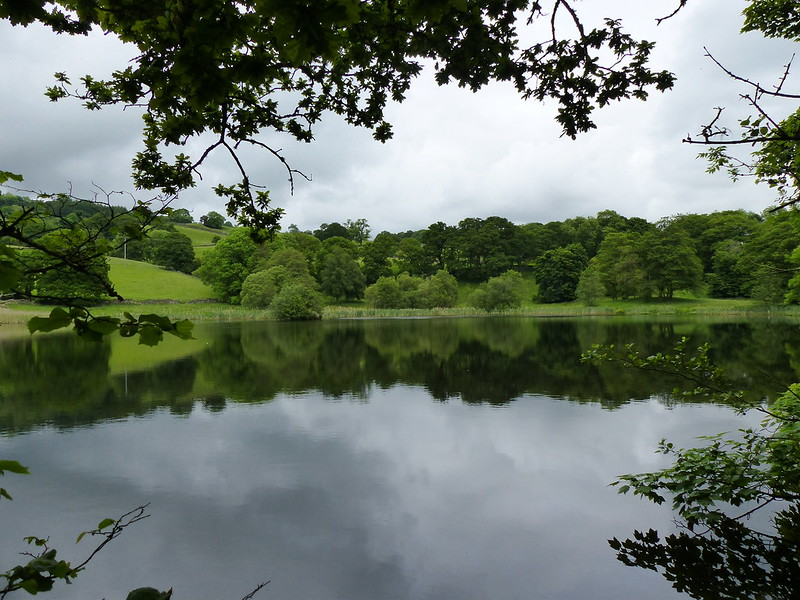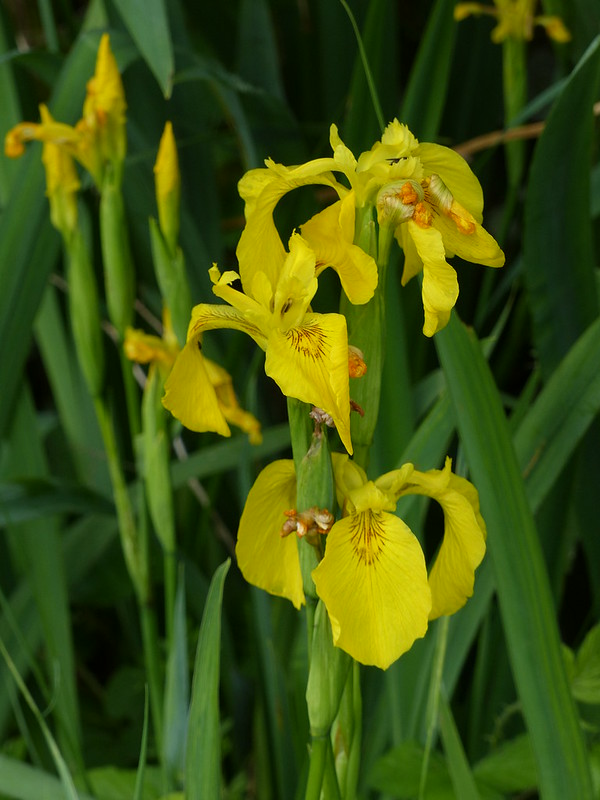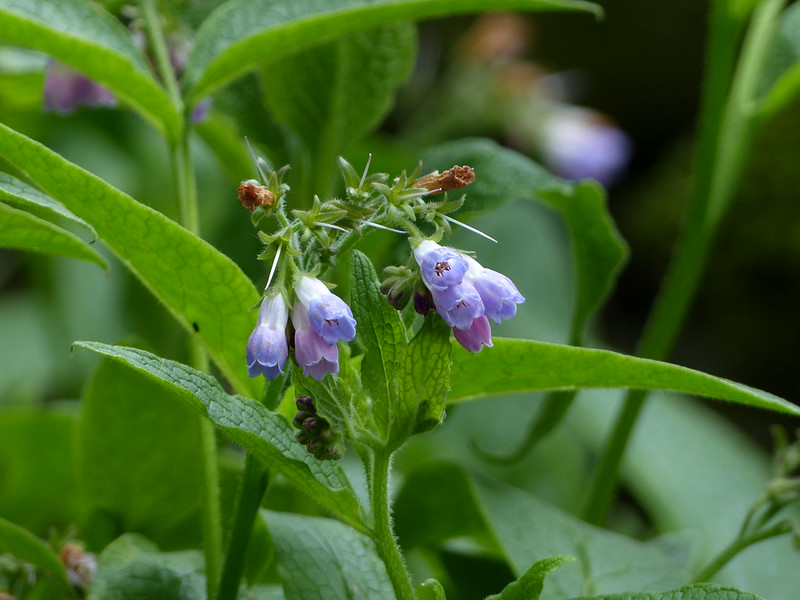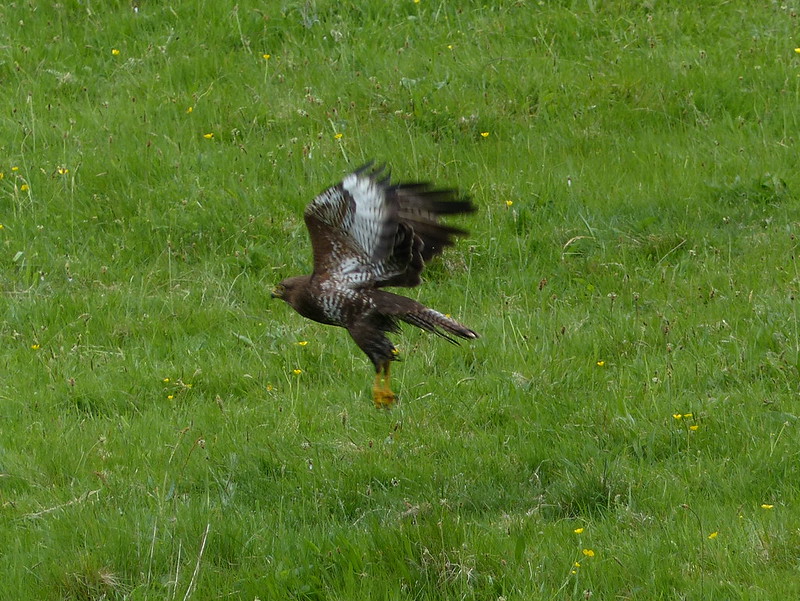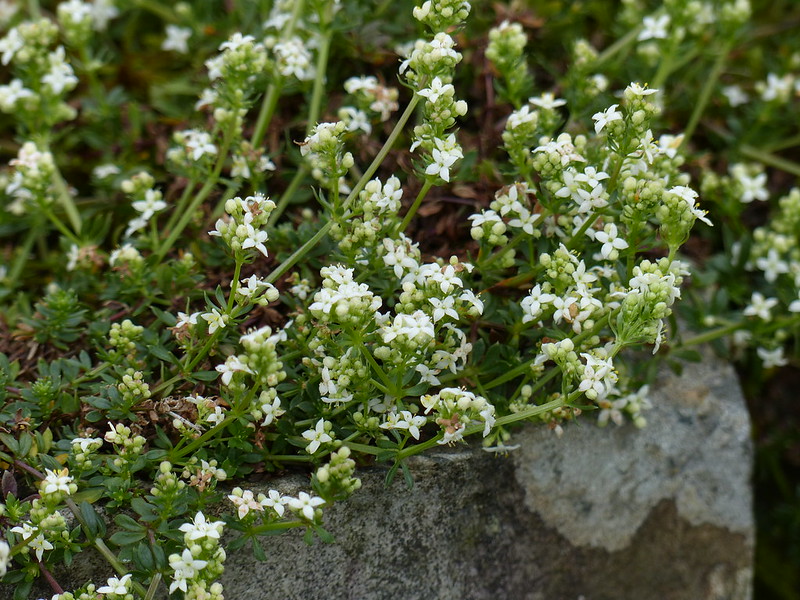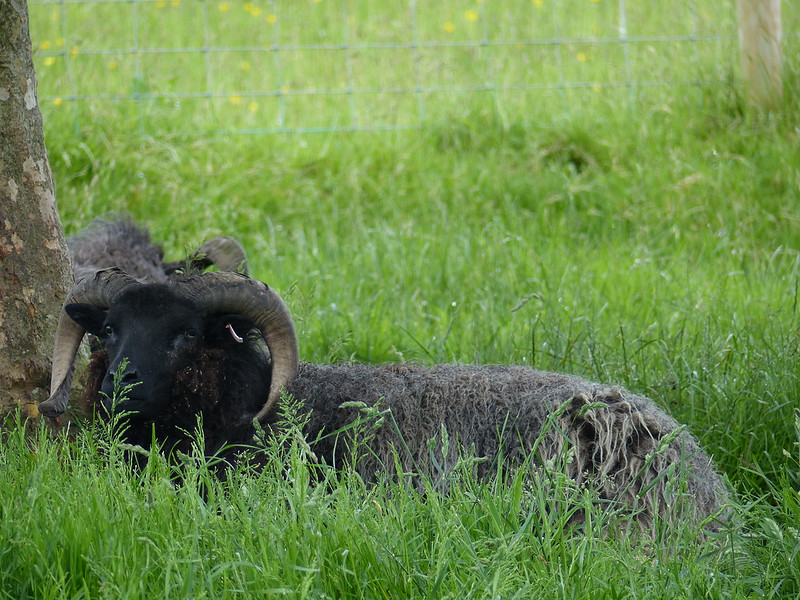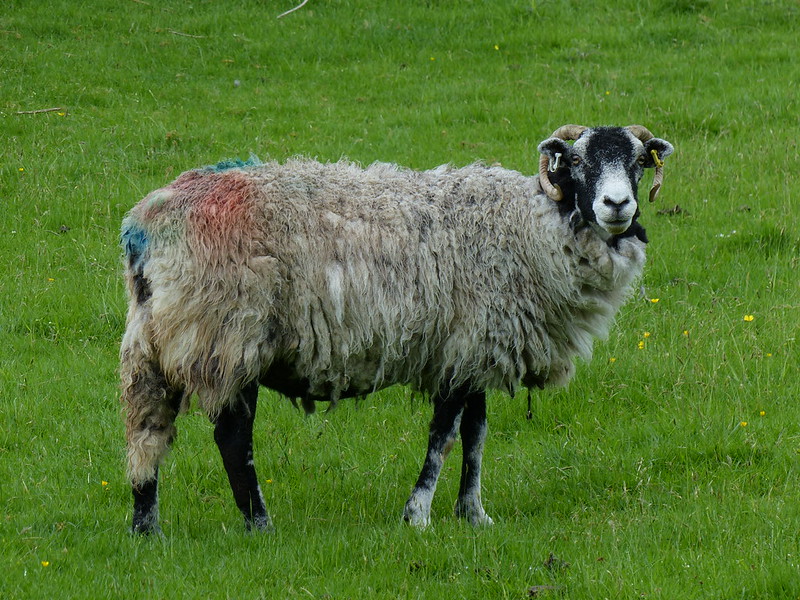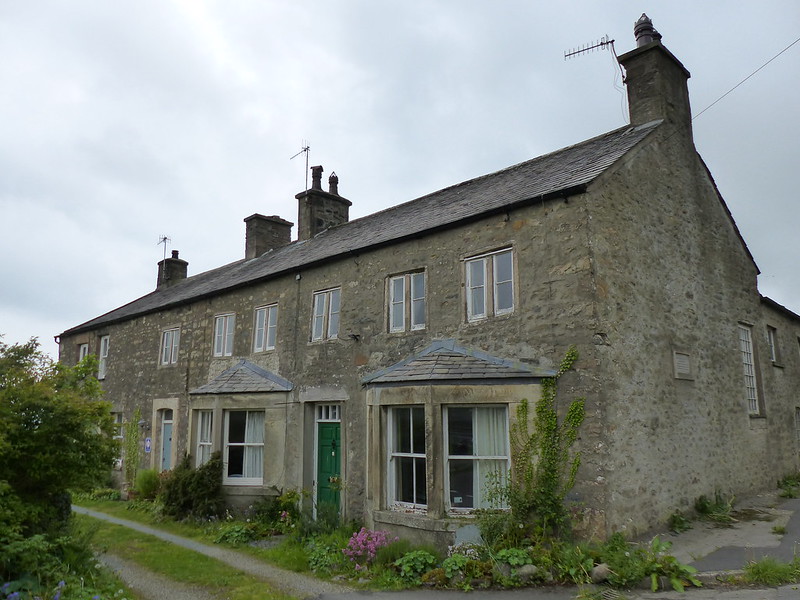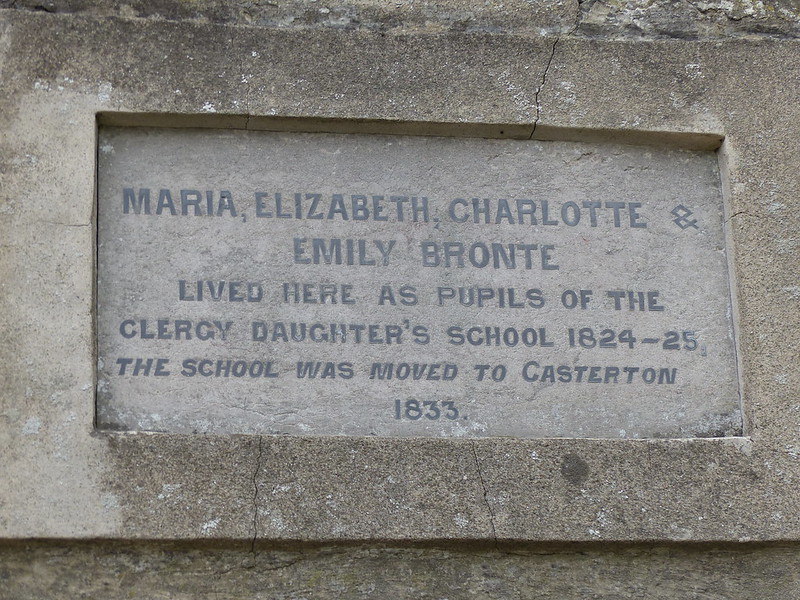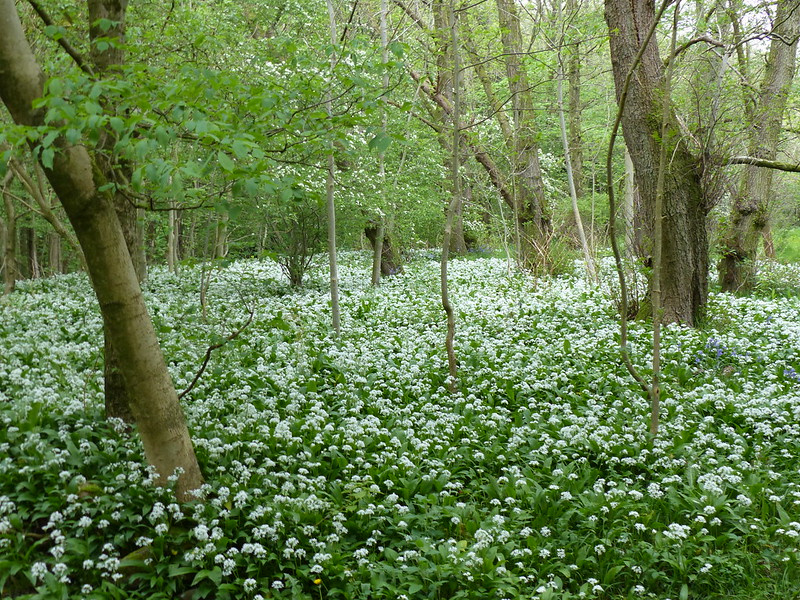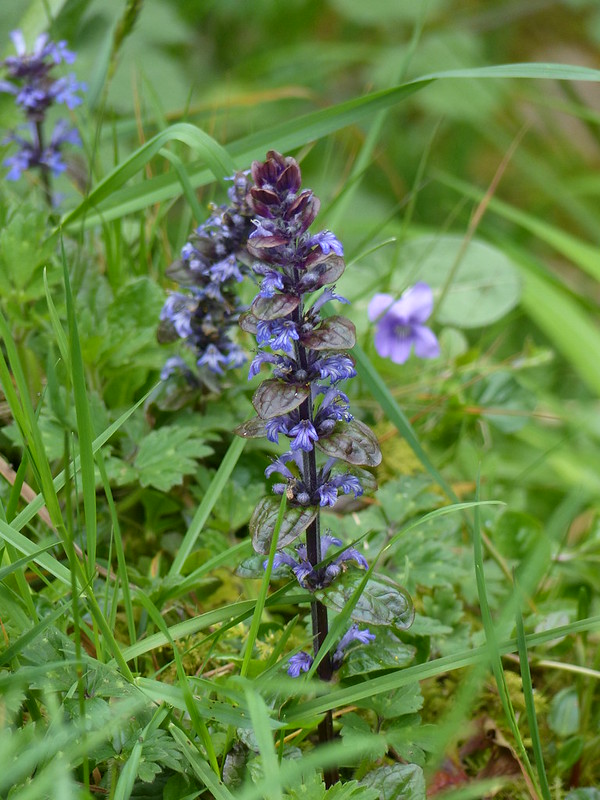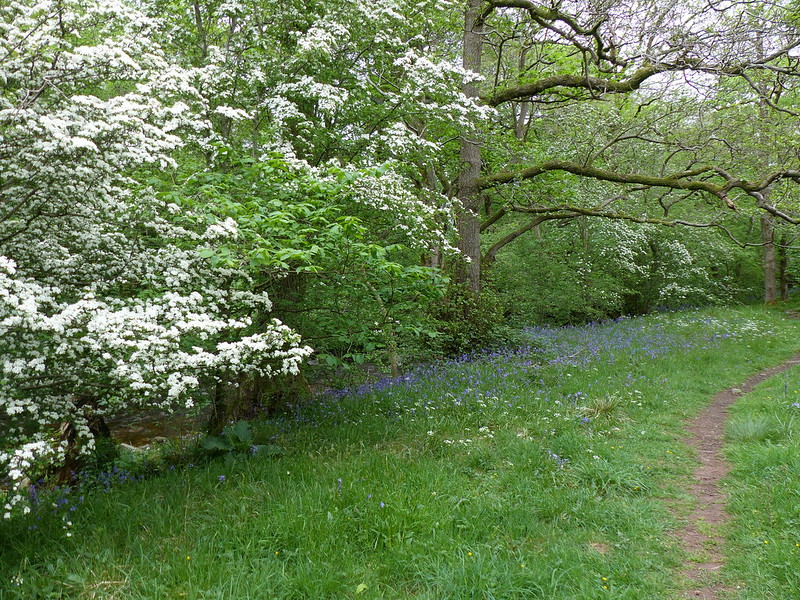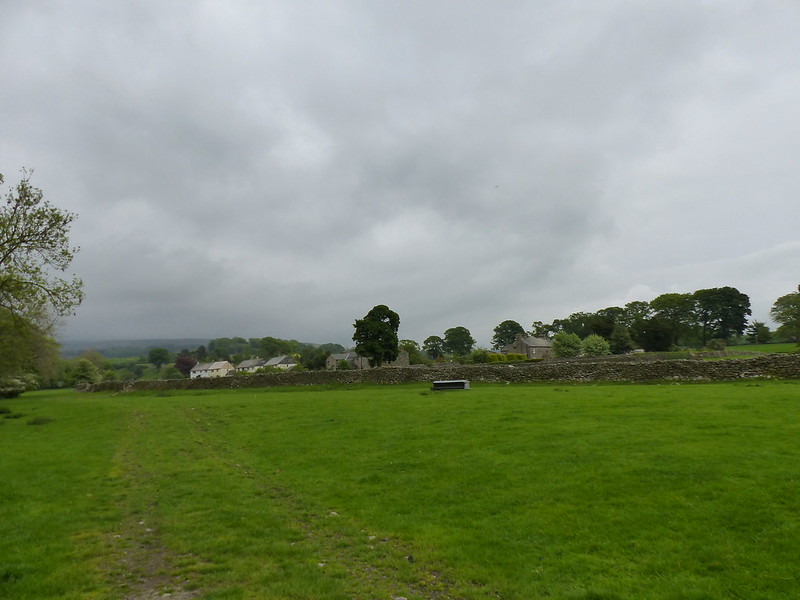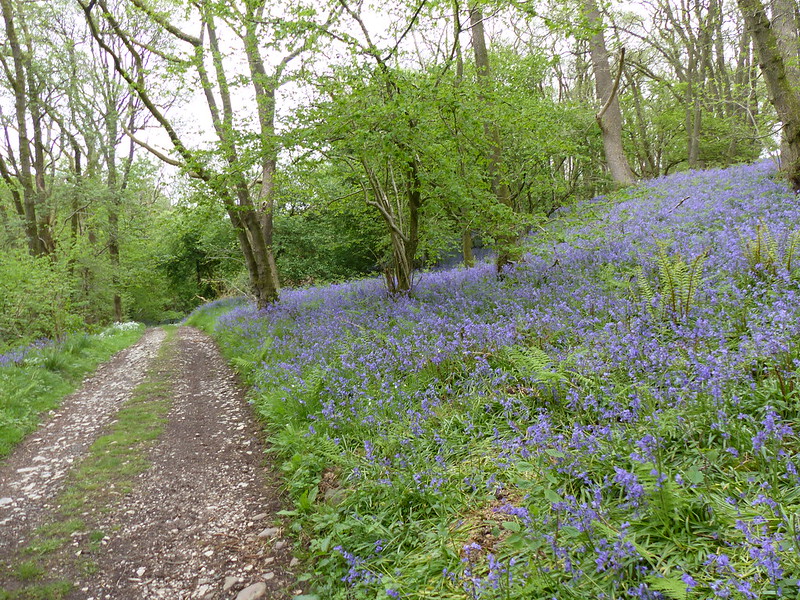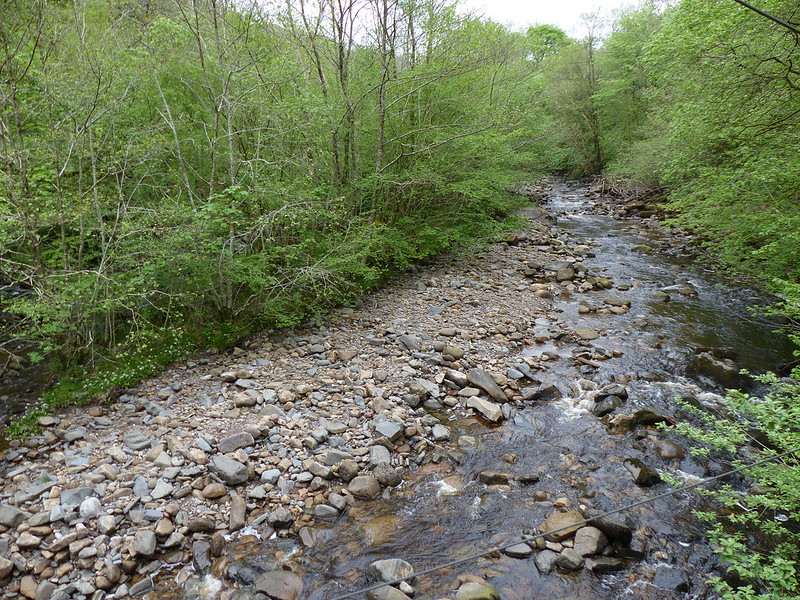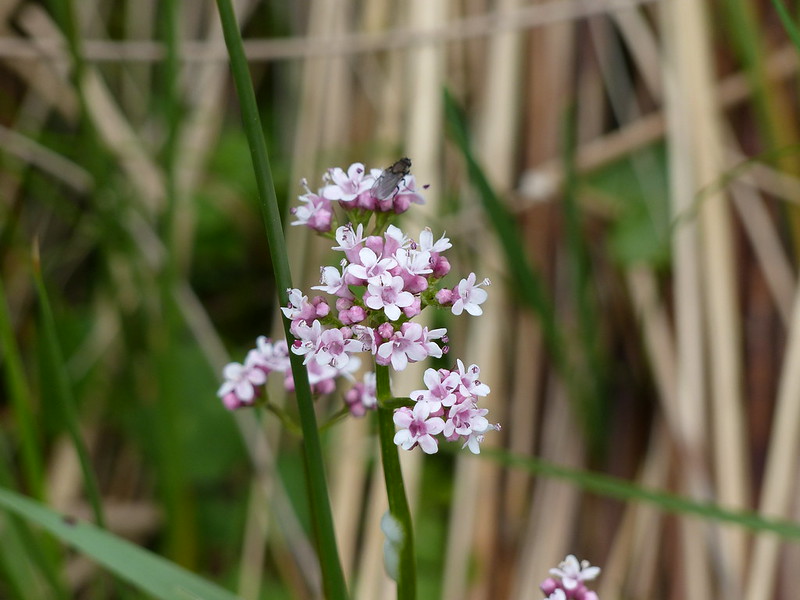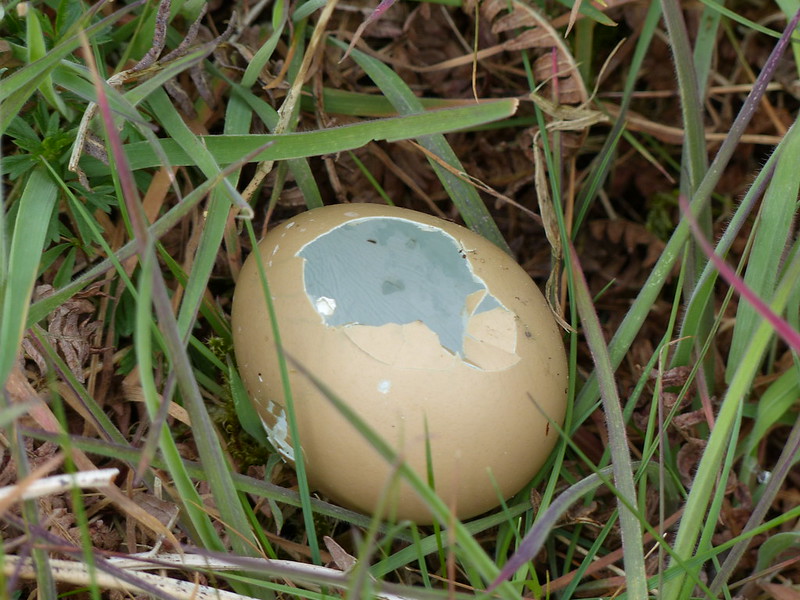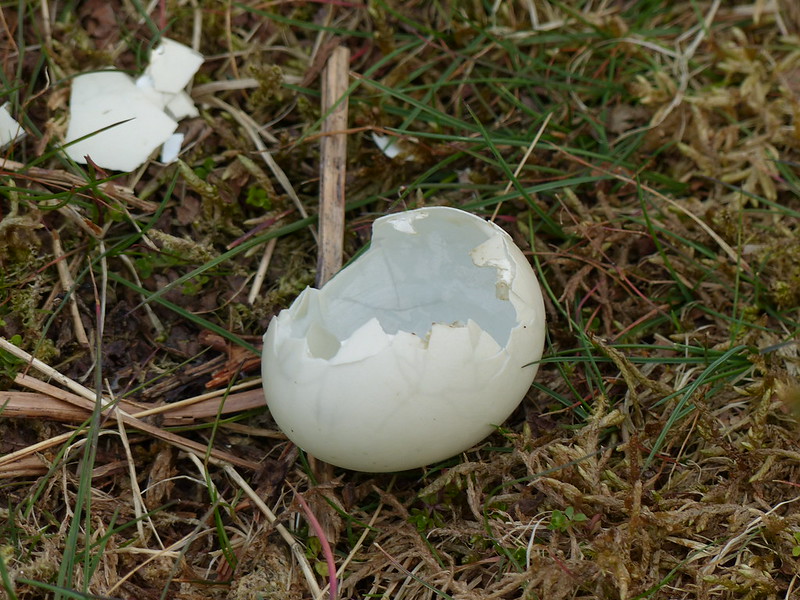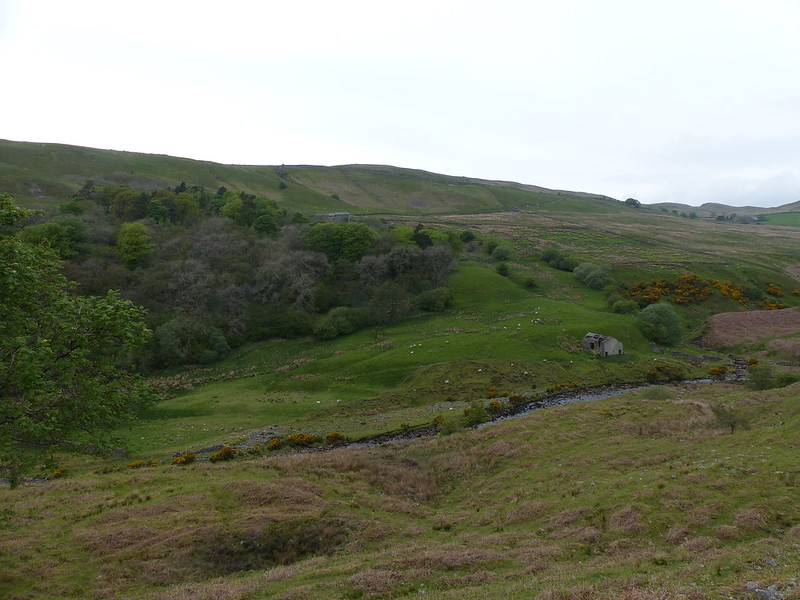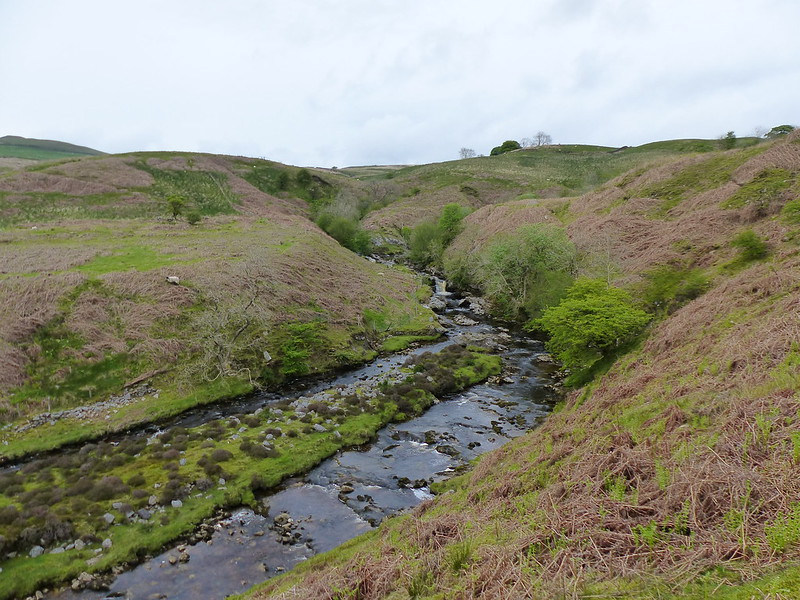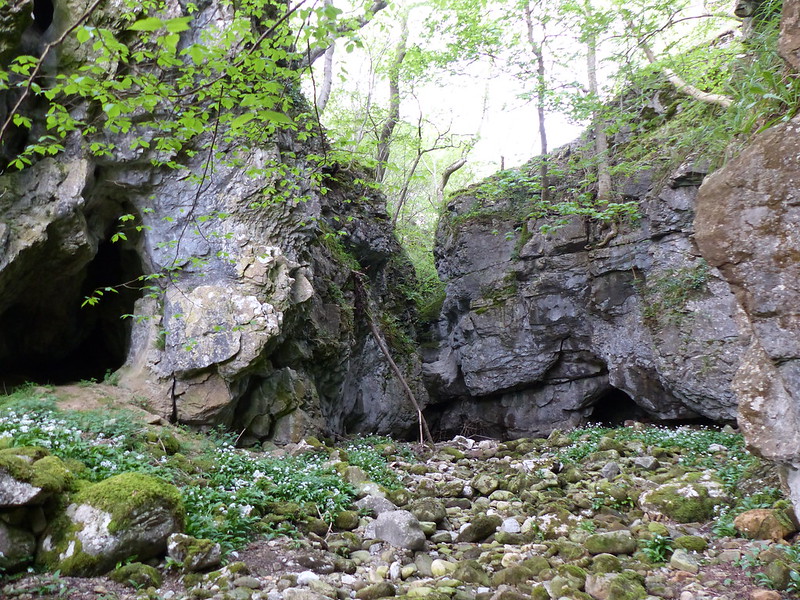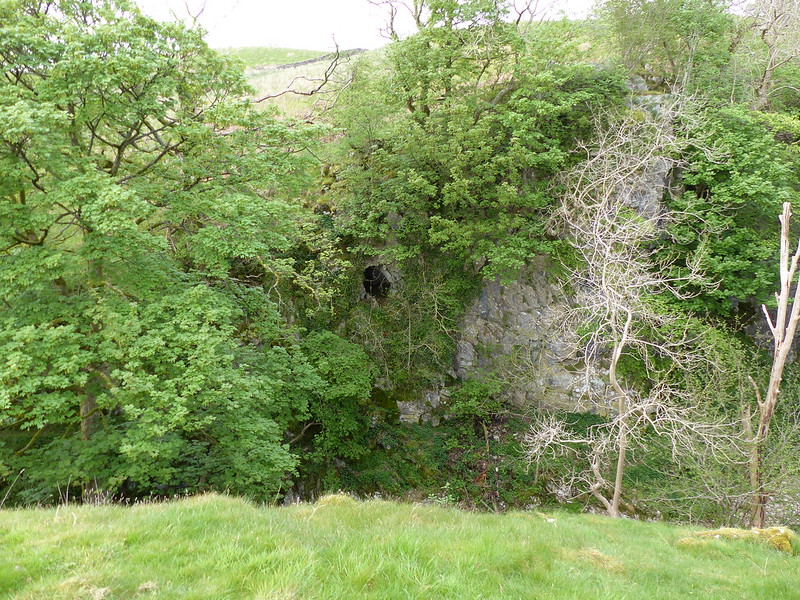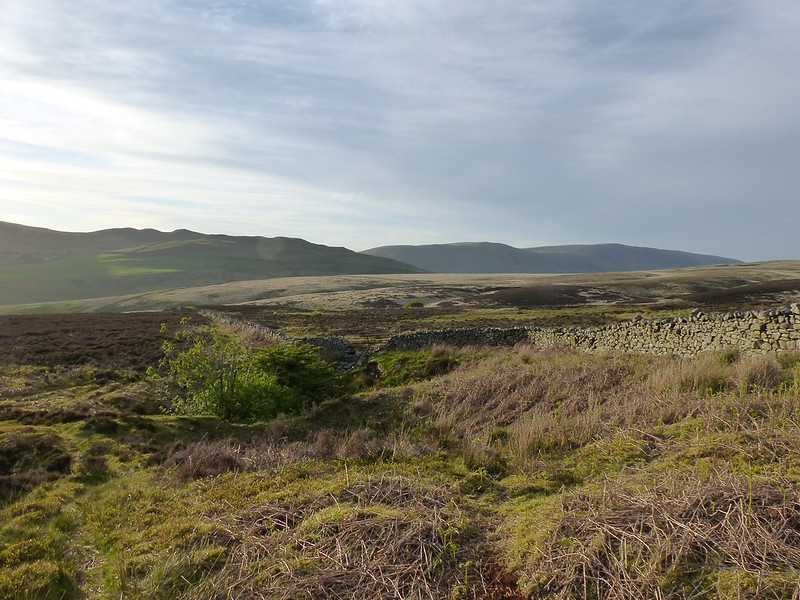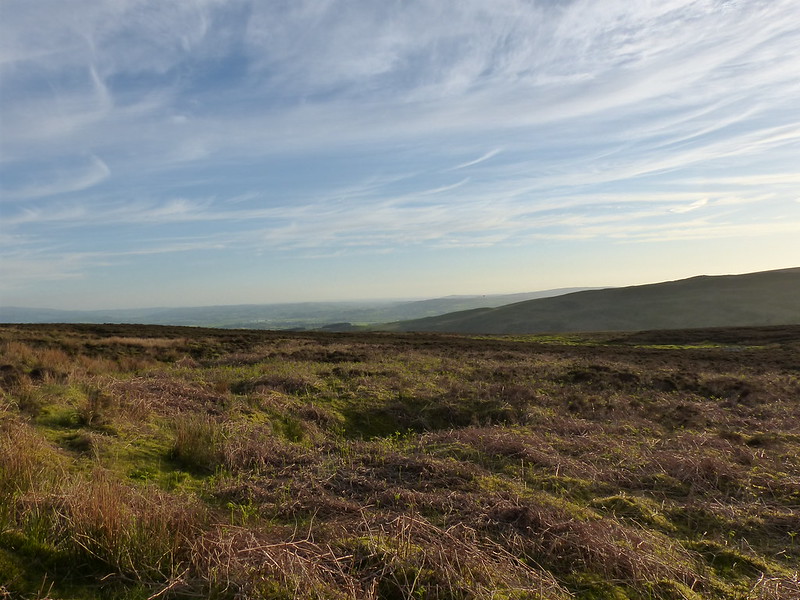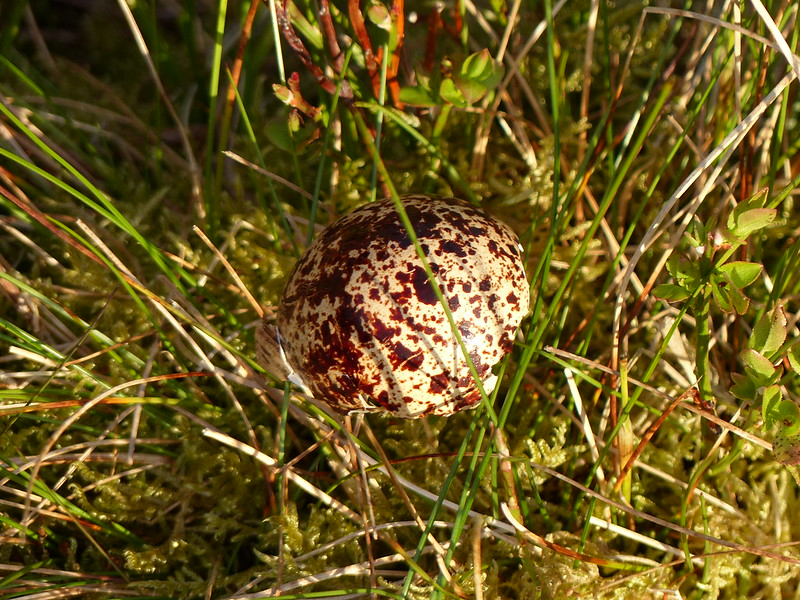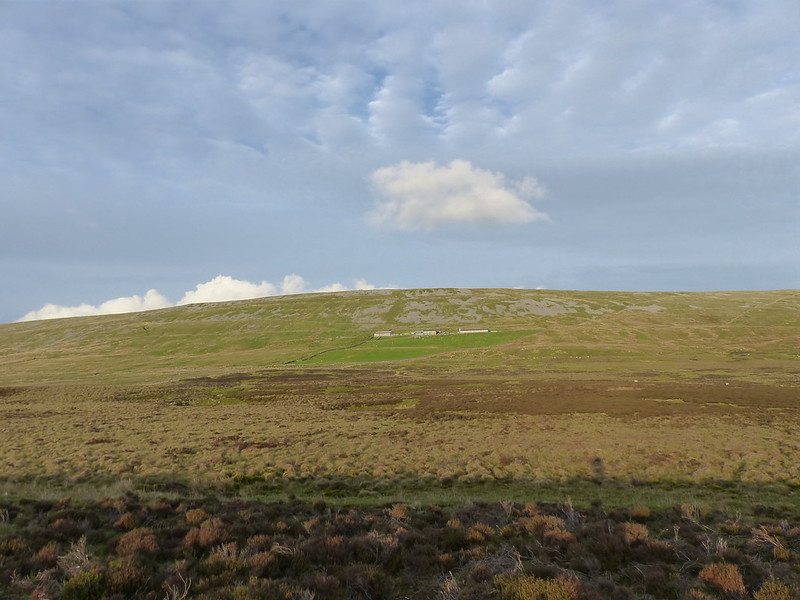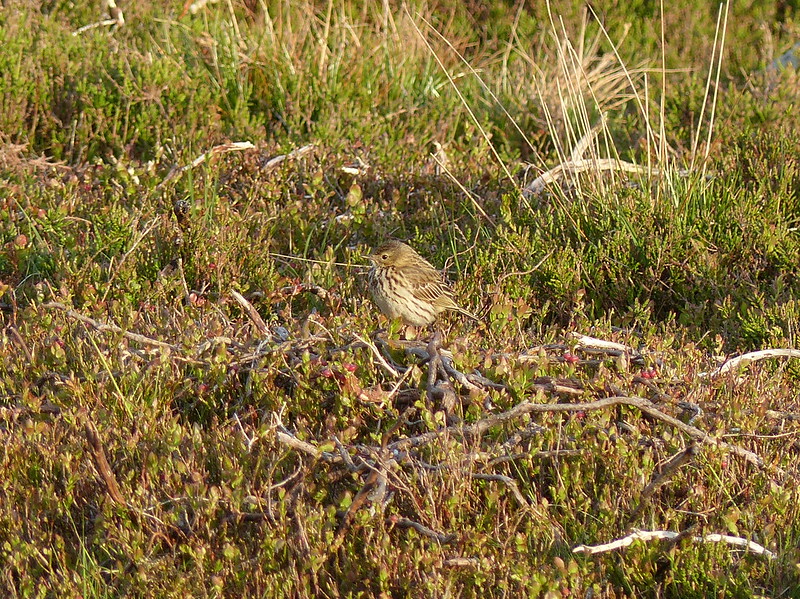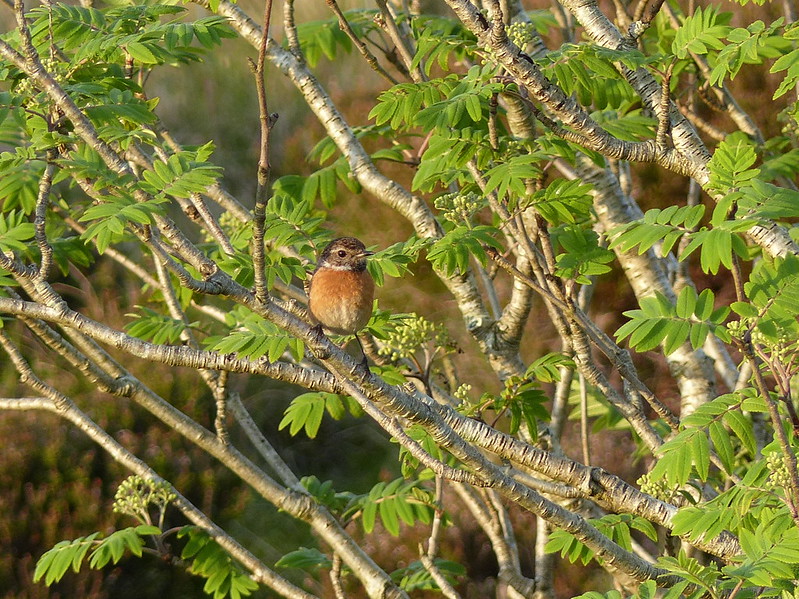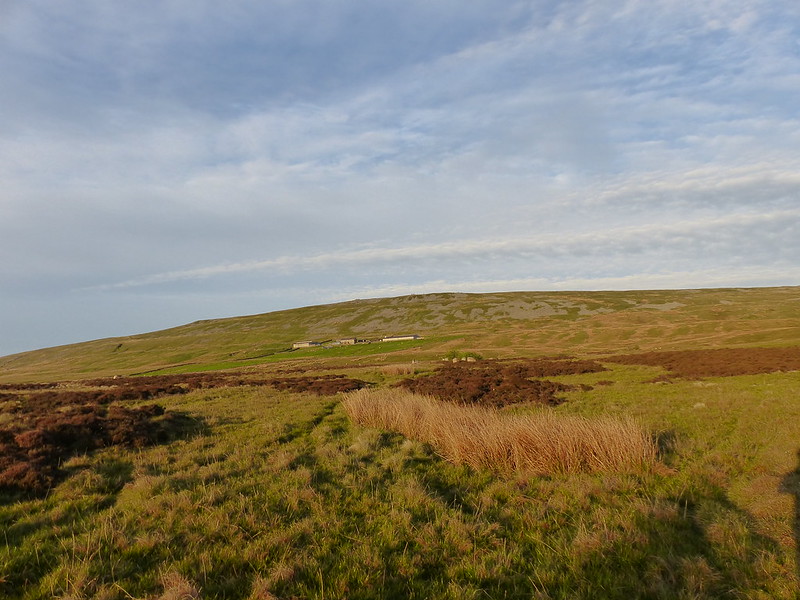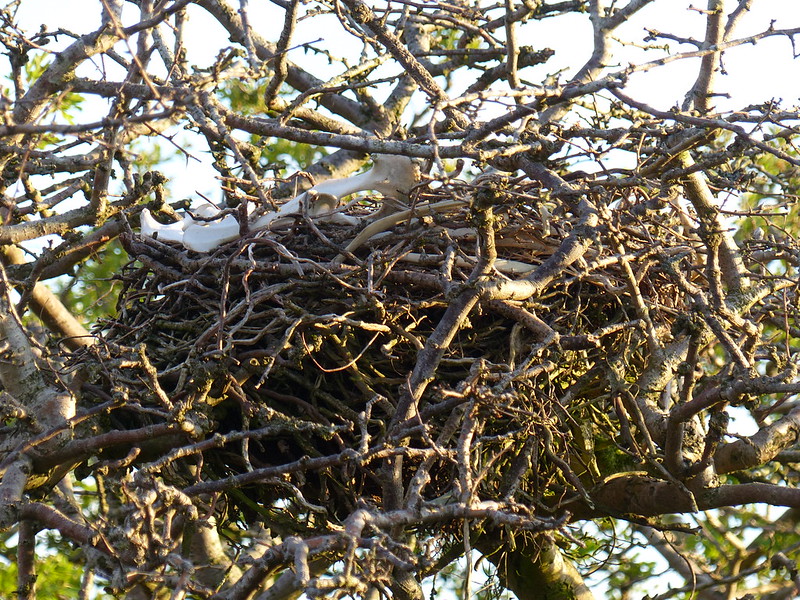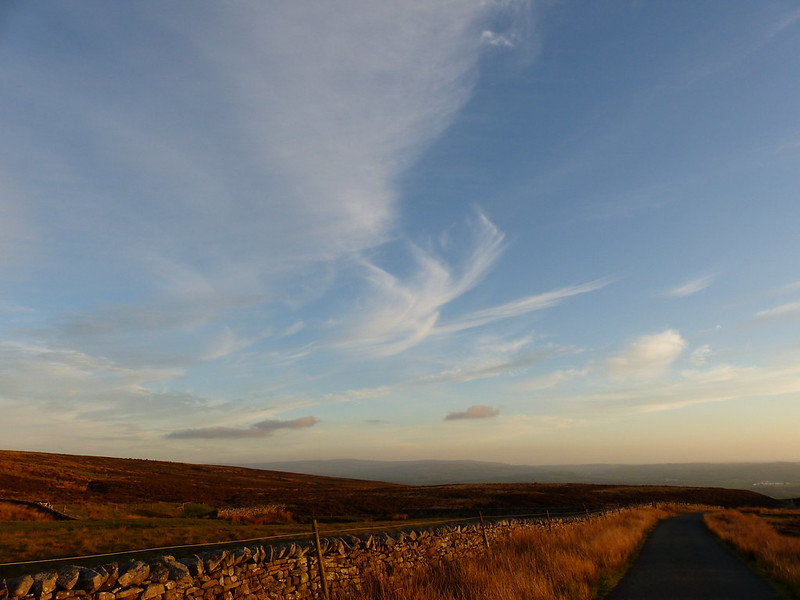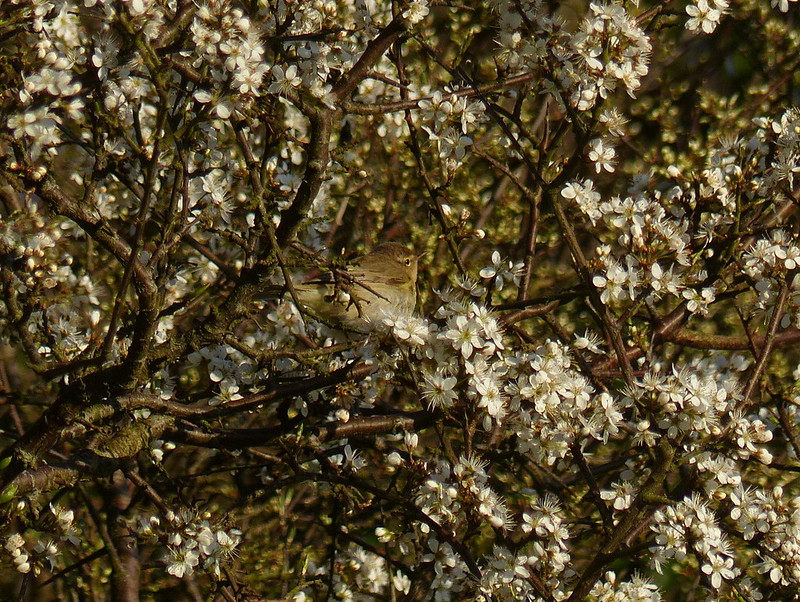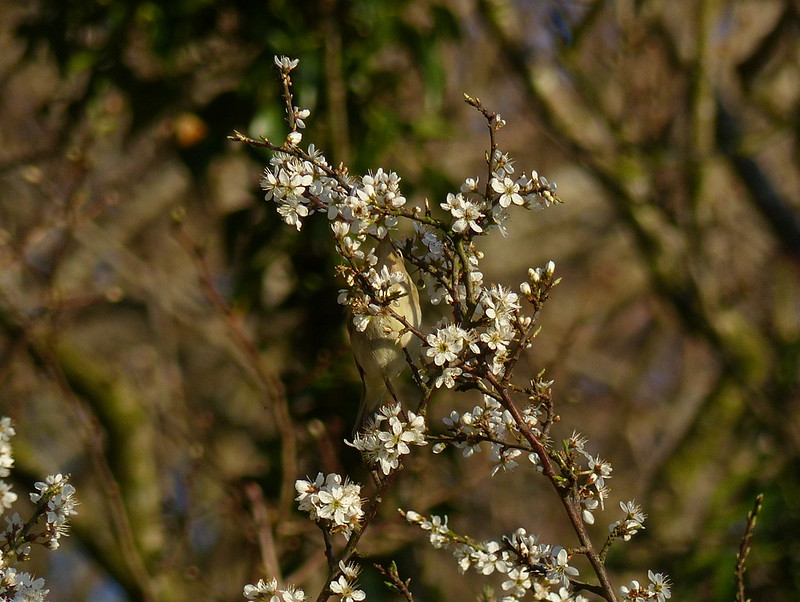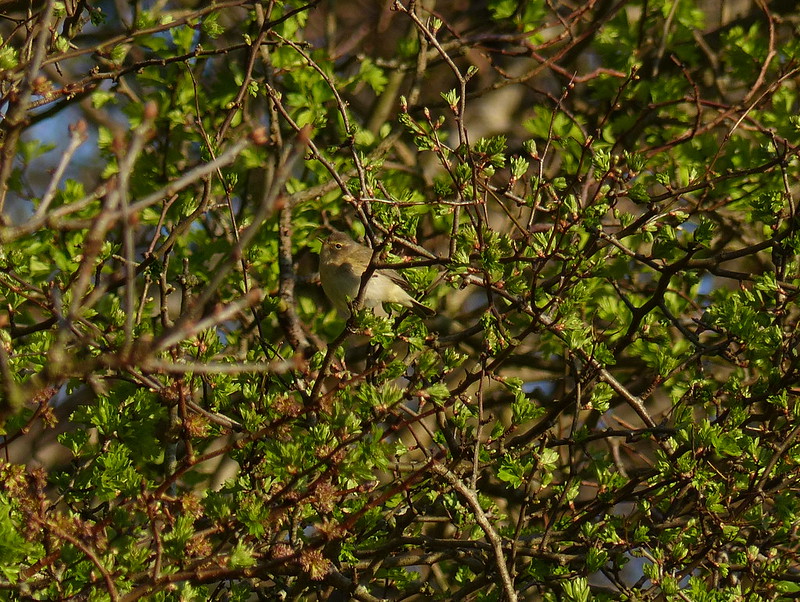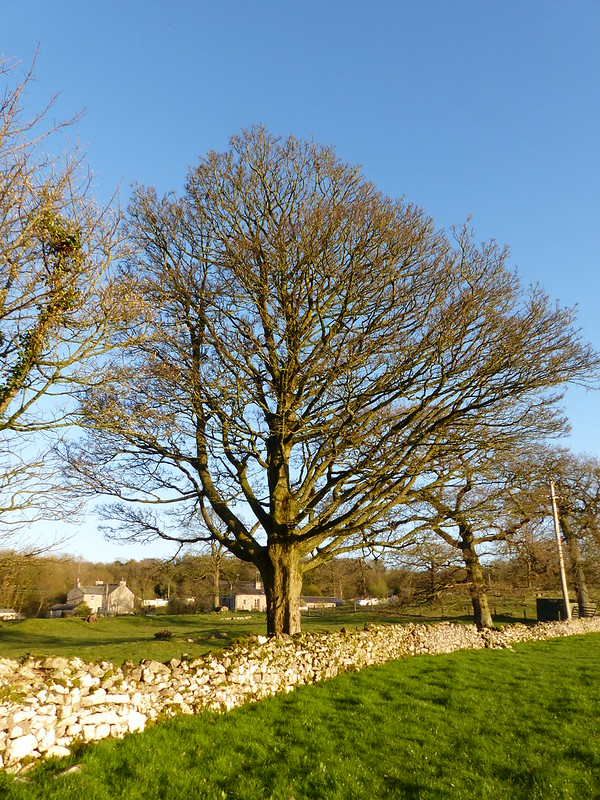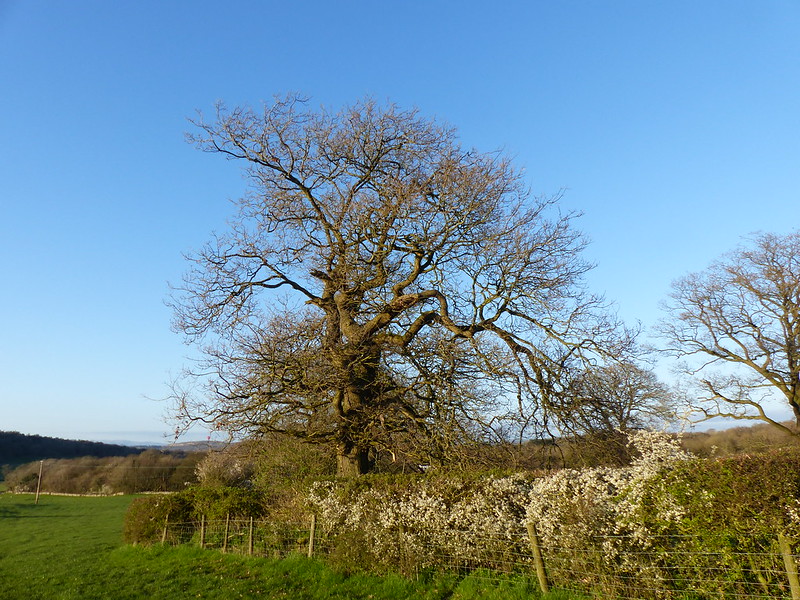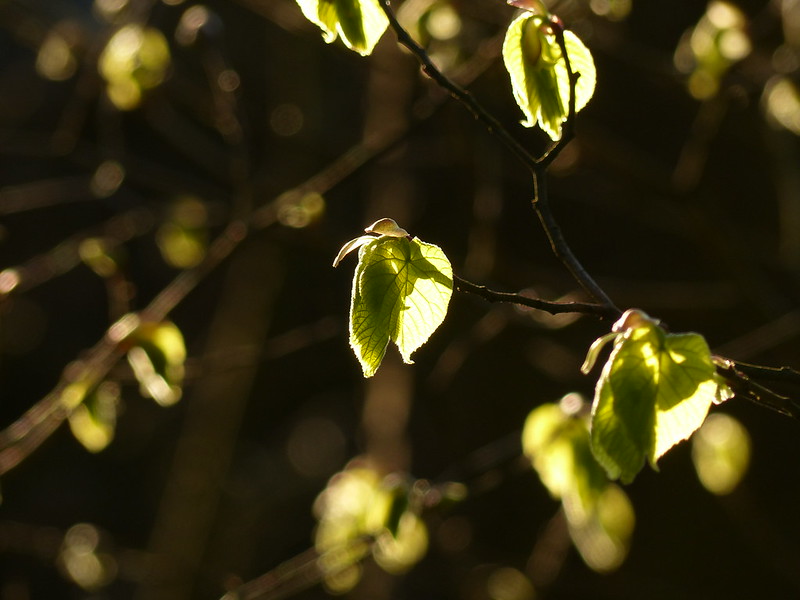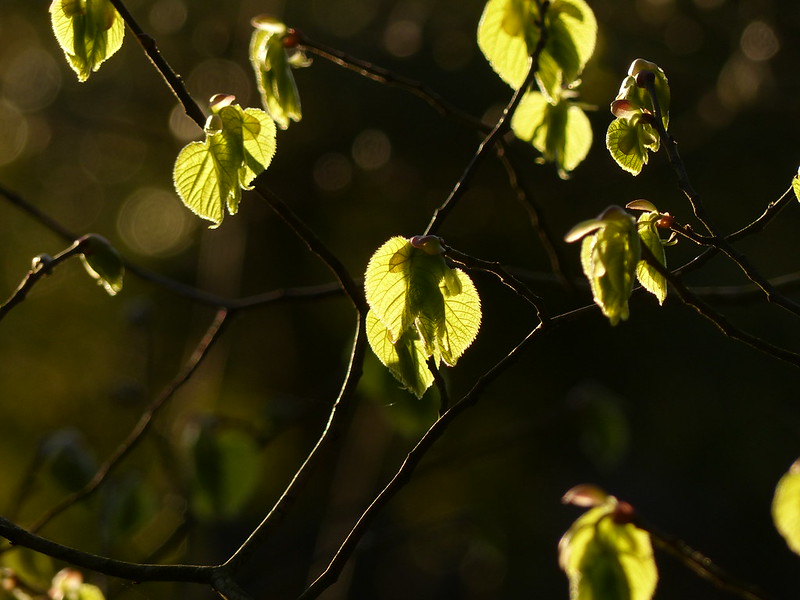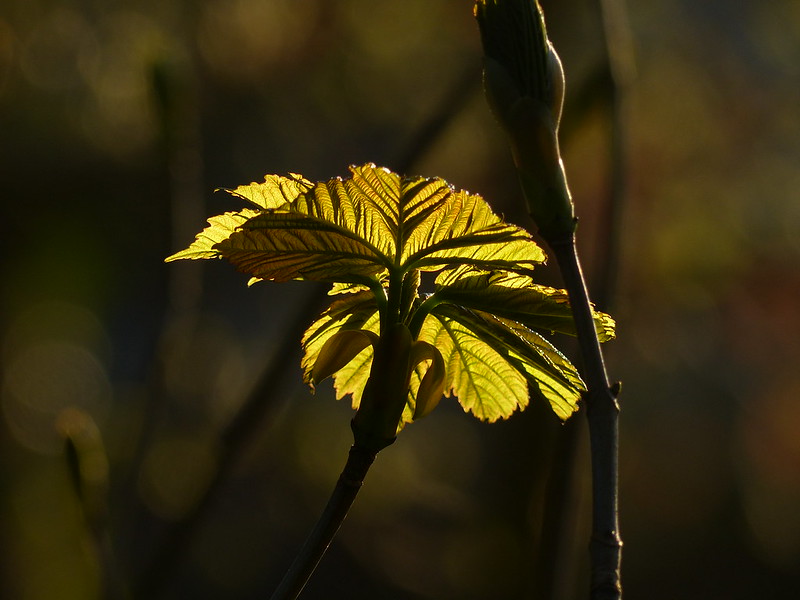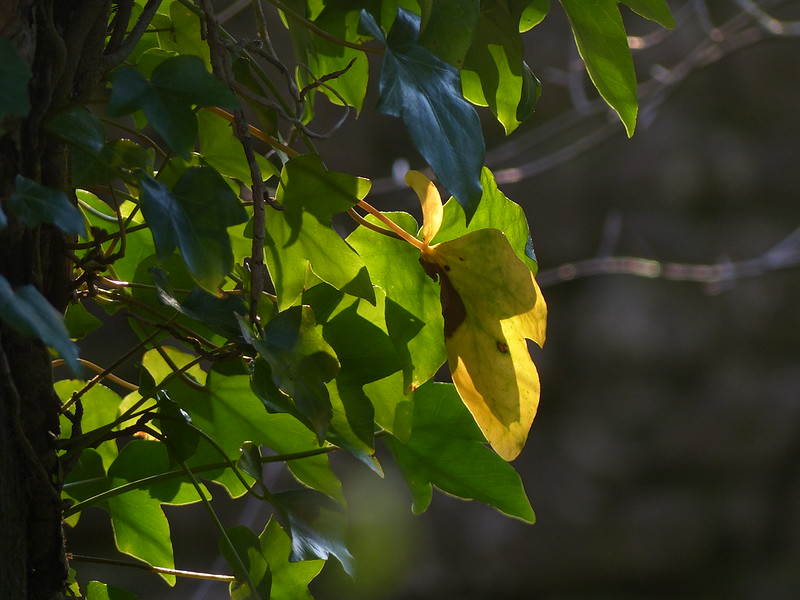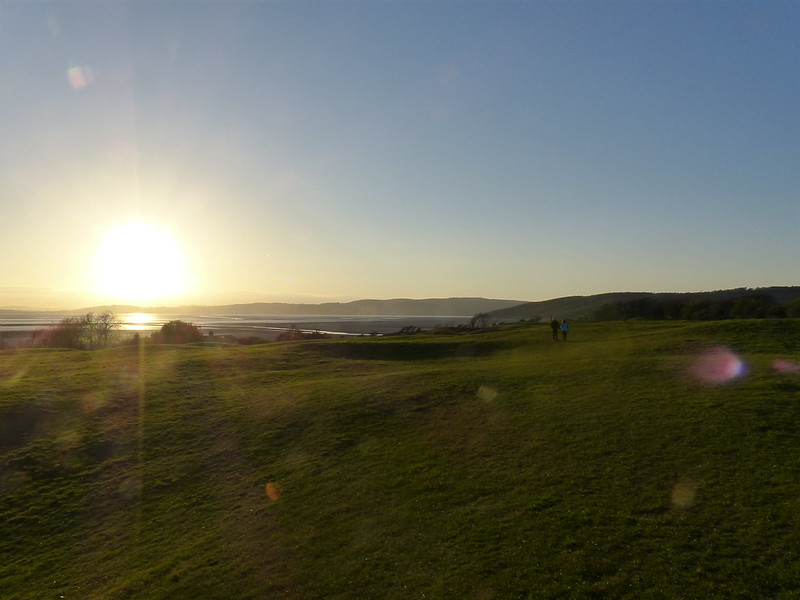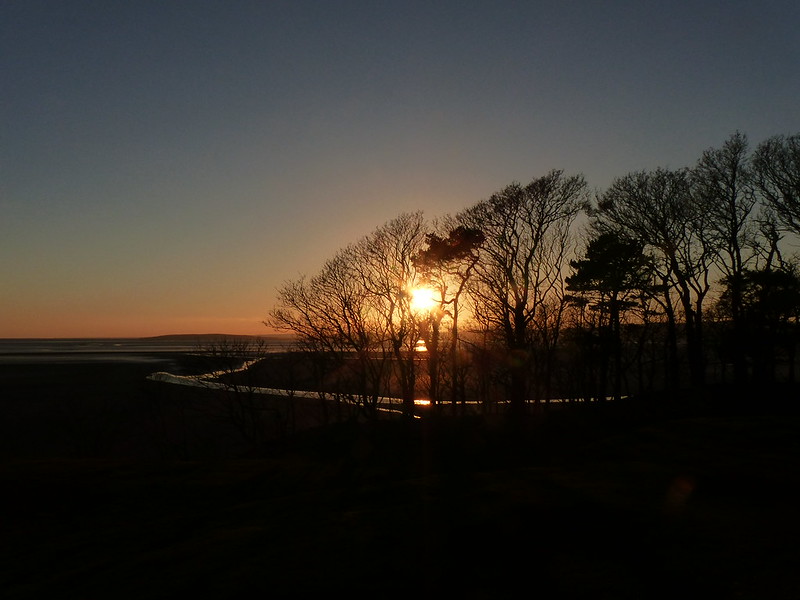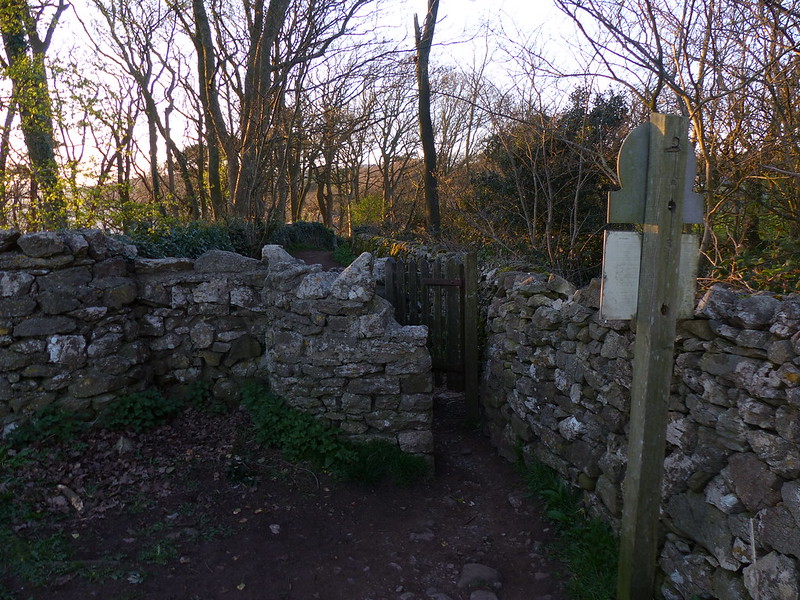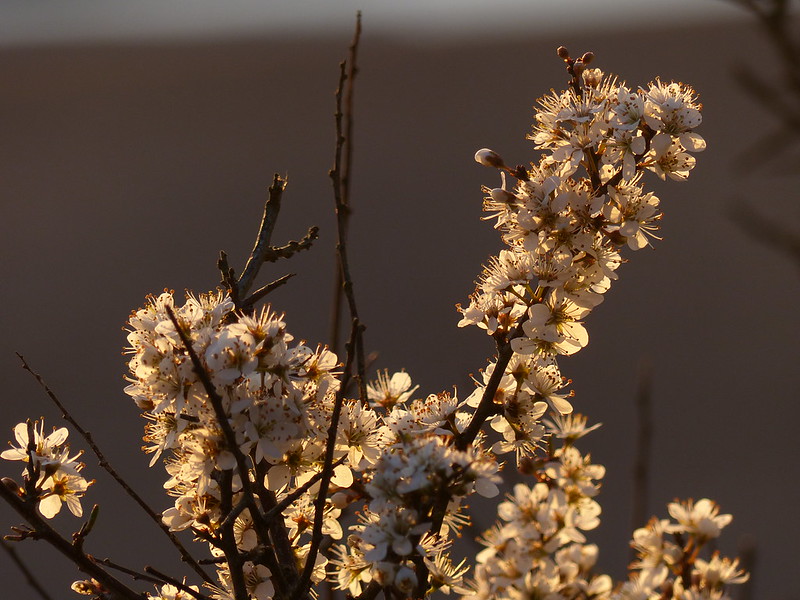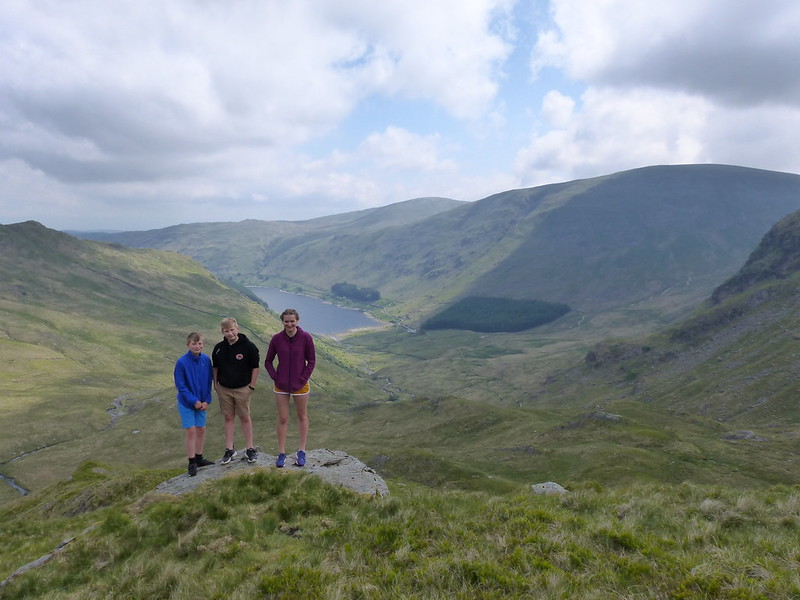
On Piot Crag, Haweswater behind.
We eventually arrived at the end of Haweswater late on the Bank Holiday Monday afternoon. The car park was still fairly busy, but was also noticeably emptying. We chose to revisit Small Water, the site of A’s first wild-camp, two year ago, for the same reasons we’d chosen it then: it’s a short walk-in, starting from quite high altitude. In addition, we now knew for sure that there were a number of good spots in which to camp by the tarn.

An early rest during the ascent to Small Water.
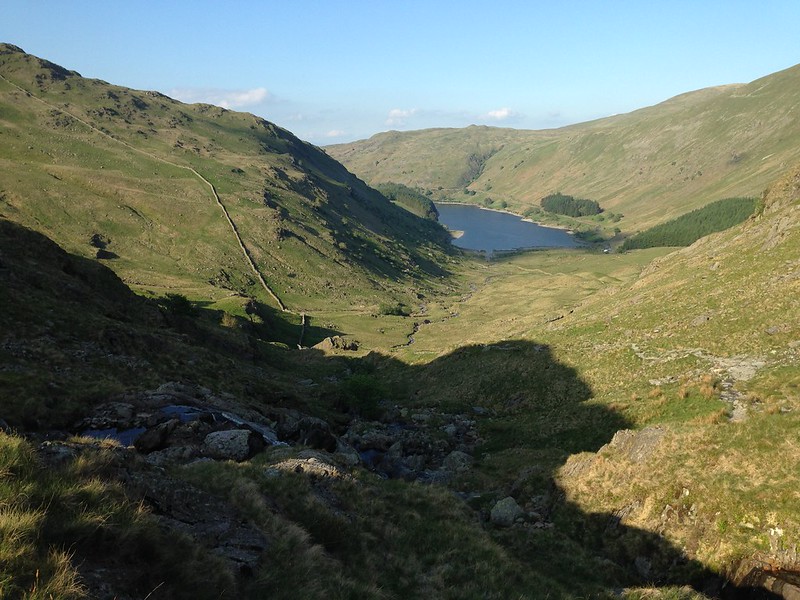
Looking back to Hawes Water from close to the top of the climb to Small Water.
It was still hot, so when we arrived at Small Water, we dumped our heavy bags in a suitable looking spot, and made a bee-line for the lake. The southern side of the tarn was still bathed in sunlight, but the sun would evidently soon disappear behind the hills, so we made the most of the opportunity and dived in for a swim. (Except TBH, obviously). The water was cold, but not at all bad, once you were in, and the surroundings were superb.
The place we’d selected to pitch our tents, which was close to where A and I camped last time and which I’d ear-marked then as a likely place to get two tents comfortably, was still in the sunshine fortunately, at least for a little longer. The Quechua tent we bought A goes up very quickly and A has the process down to a fine art, having used it several times now. The boys and I took a little longer with Andy’s tent, but felt that we’d made some progress with how to do the trickiest part of the process, so that was something.
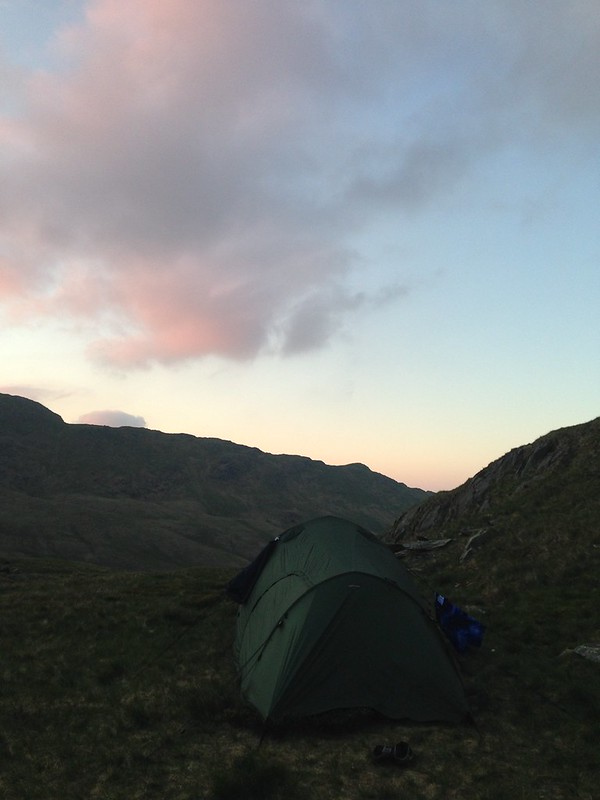
We enjoyed our pasta tea whilst watching pink clouds drifting overhead. The boys went through their usual routine of running around excitedly, exploring our surroundings and climbing every boulder and small crag they thought they could manage, whilst the rest of us filtered water for the morning. One final, short outing, to circumnavigate the tarn, the boys constantly on the look out for places where they might jump in, and then we turned in.
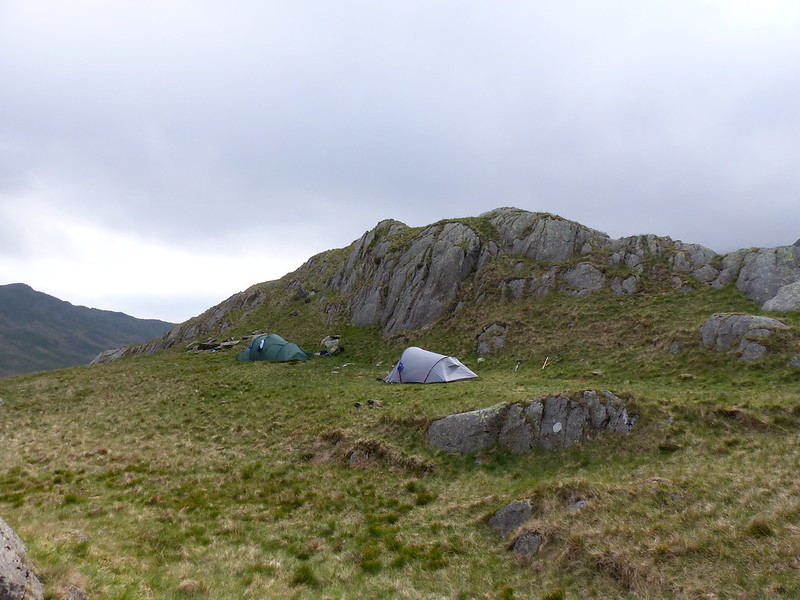
Our pitch.
The next morning brought low clouds and, in our tent at least, recriminations: the boys and I all felt that we’d had a poor night made worse by the snoring and tossing and turning of the other two, who had, in our opinions, both clearly slept soundly and loudly. We can’t all have been right. TBH and A, meanwhile, who both sleep like proverbial logs, slept on after we’d got up, and eventually I steeled myself and woke them up.
We’d all put together our own versions of this porridge mixture. B was adamant that the edition of powdered milk, which we didn’t have when he’d tried it before, had transformed the result so that it was “as good as porridge at home”. A meanwhile, had ground up her oats so that, after the addition of hot water, her’s actually looked like proper cooked porridge. She’d also added chocolate chips and I have to confess that, having tried it, the result was delicious. TBH’s innovation was powdered coconut milk, which I didn’t even know existed. That worked too. You’ll have to excuse all of the details about food, but if you’ve ever been back-packing, you’ll know how vital getting that right is to the success or otherwise of a trip.
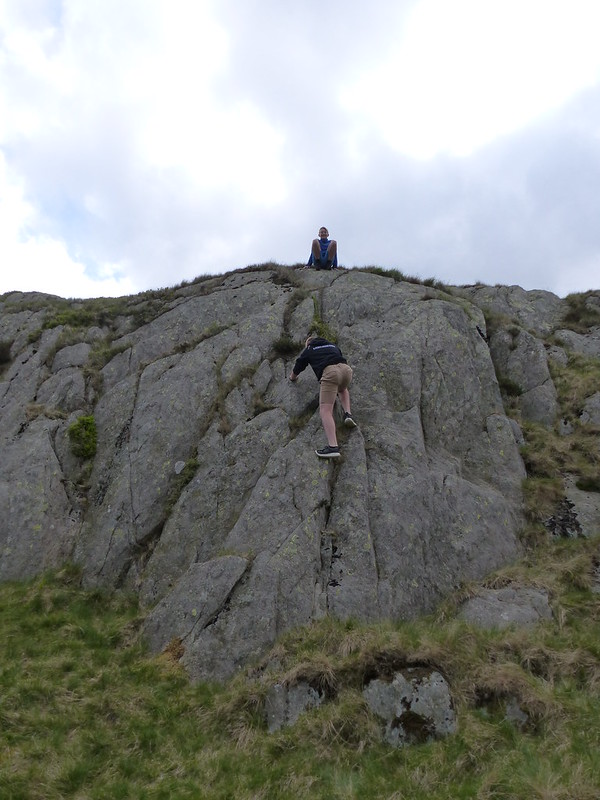
The boys loved these slabs, right by where we camped. Here, Little S is shouting “Look at me Andy”, which he seems to have adopted as a catch phrase. I think the first time he did it, he will have been only about three and had just scaled a small cliff above a beach at Towyn. I don’t know if, even then, he was being mischievous and deliberately trying to frighten our old friend Andy, but that’s been his intention ever since, so that now he sees it as an in-joke and will shout it even if Andy is not with us.
After our leisurely start we set-off up Piot Crag. It looks fairly intimidating from below, and perhaps more so when you are part way up, but we knew that the route ‘would go’ as A and I came this way last time.

You reach a point where the way ahead seems barred by crags…

But in fact there are two lines of crags and if you head right you reach the bottom of a stone-filled gully which leads up between them, steeply, but safely.
I had been quietly hoping that we might find…

…some Roseroot having read that it can be found on the steep crags above neighbouring Blea Water.
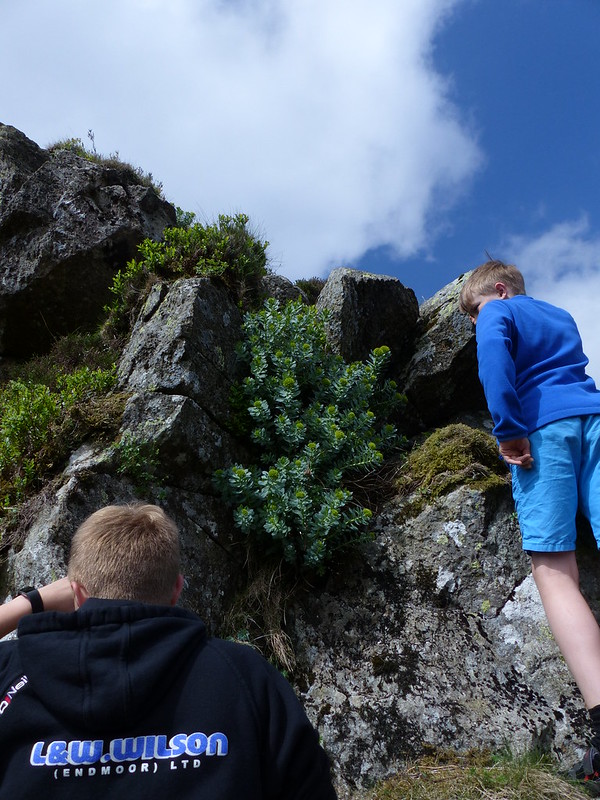
It’s a member of the stonecrop family, many of which are quite small, but this is fairly sizeable by comparison. It’s a succulent and has thick leaves, like a Sedum. The Wild Flower Key lists it with Orpine, which grows abundantly on walls near home. Apparently, its roots, when dried, smell like roses, hence the name. I’m sure that I’ve seen it before, but can’t think where. I think it’s quite rare in the wild, but is also grown in rock gardens. The flowers weren’t fully open, which was a shame, but gives me something to look out for in future. I wanted to climb above it to get better photos of the flowers, and Little S, naturally, was keen to come with me. When the first hand-hold I grabbed, a very substantial lump of rock, started to come away from the rockface, I abandoned the idea.
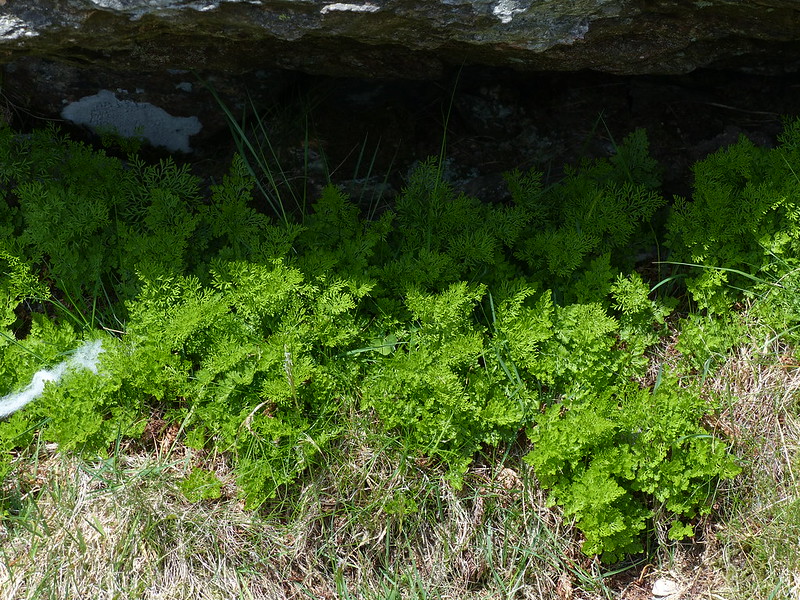
Parsley Fern.
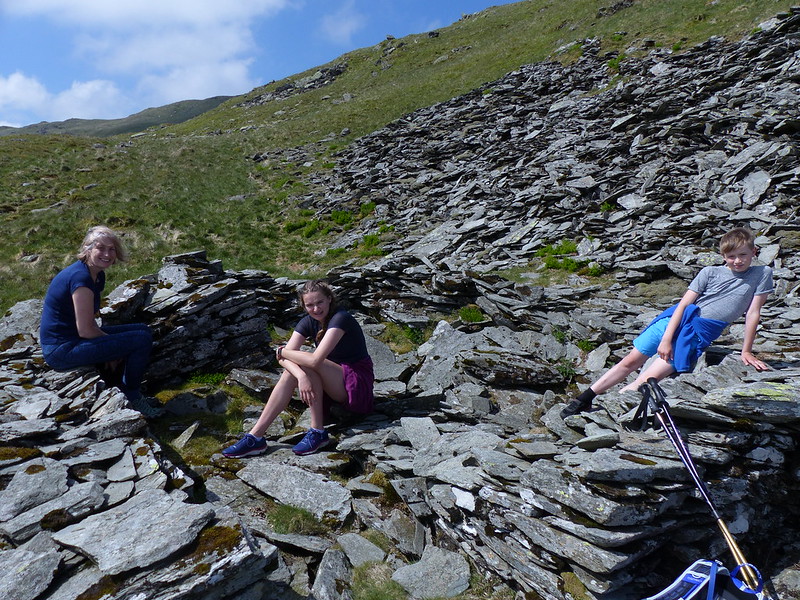
At the top of the gully there’s a fair bit of spoil and a few structures. There must have been some sort of mining or quarrying hereabouts in the past. We stopped for a quick drink.
From there it’s not much of a climb to the top of Mardale Ill Bell.
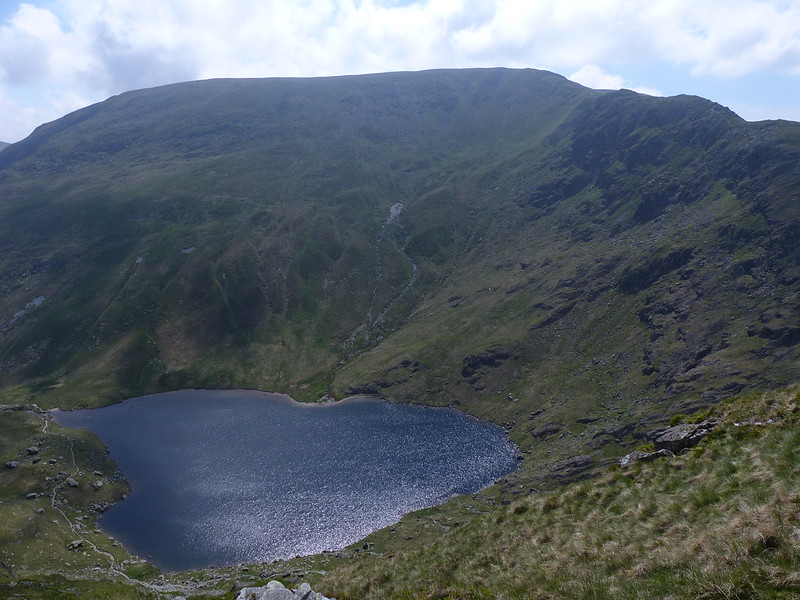
Small Water and Harter Fell..
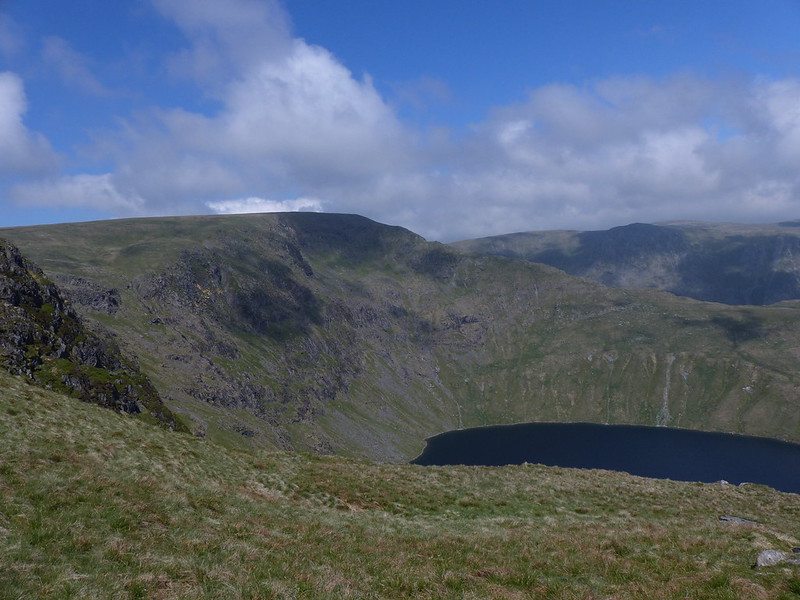
High Street and Blea Water.
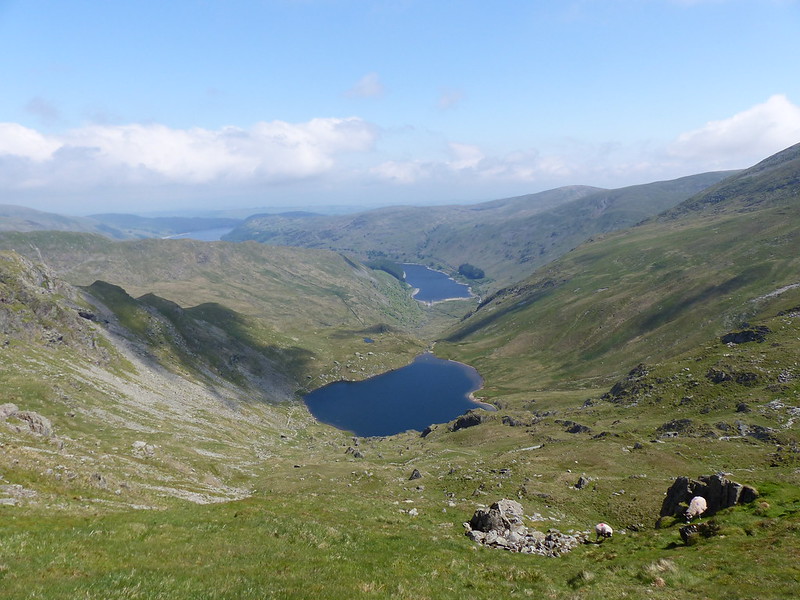
Small Water and Haweswater. Piot Crag is the ridge on the left in shadow.
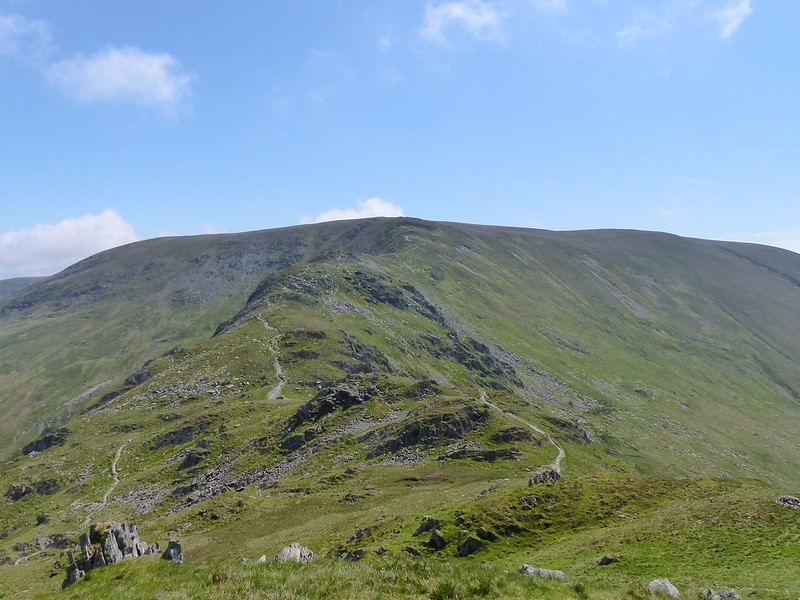
I quite fancied continuing along the ridge to Harter Fell, but I was in a minority of one.
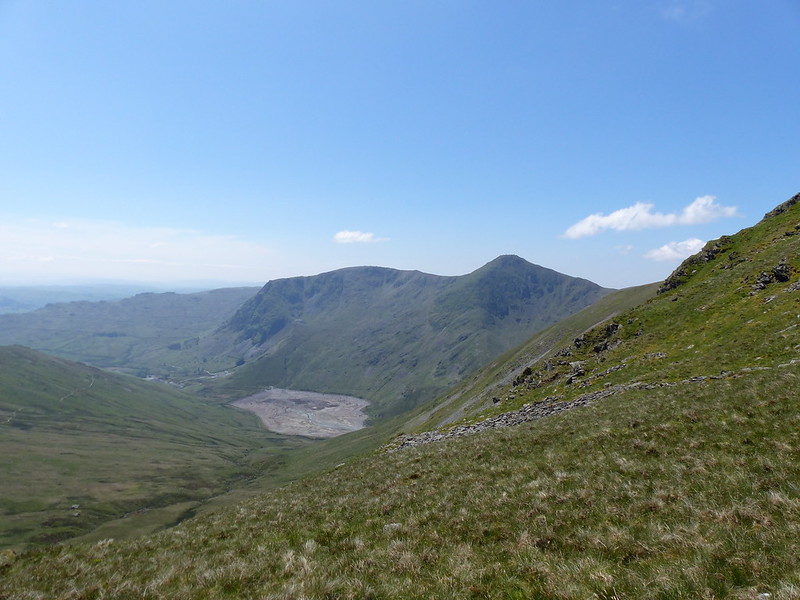
A dry Kentmere reservoir. Working on the dam apparently.
The consensus was that we should return to the tents for lunch and then another swim in Small Water.
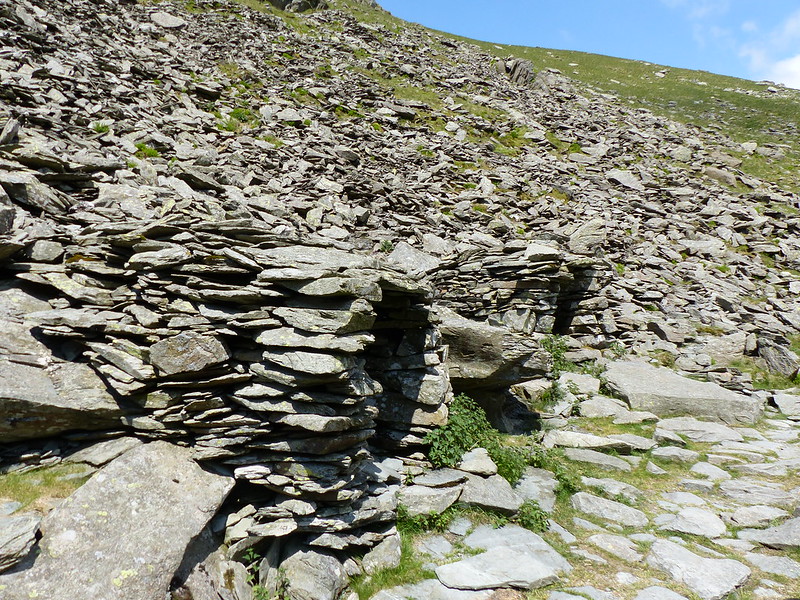
Small, odd structures by Small Water, marked on the map as ‘shelters’. By boys decided that they are garages, although they aren’t remotely big enough for anything but a Dinky toy car.
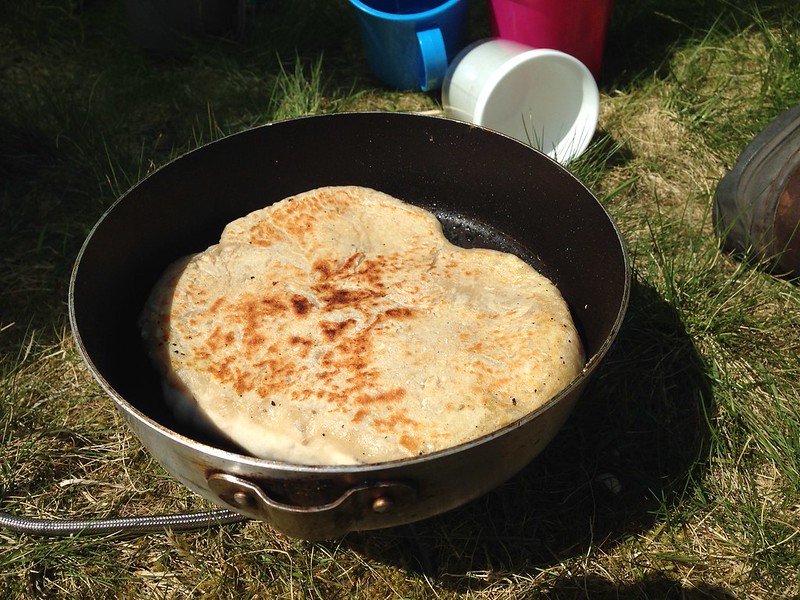
Lunch was humus and pan-fried bread, an experiment with camping food that I’ve wanted to try for a while. I’d made chapatis with tea on the Sunday night and remembered, or thought I could remember, old friend Geordie Munro once making them in a Trangia pan lid, whilst we were on a backpacking trip, and how welcome they were after a few days of less imaginative fare. So I’d brought flour, salt and dried yeast in a freezer bag and then warmed some water to add to the bag after we’d had breakfast, leaving it to rise in the tent’s porch. When we got back I found that the mixture was so sticky that there was no real way that I could hope to flatten it out into chapatis. Instead I turned lumps of dough out of the bag into a hot pan which I’d sprayed with oil. I couldn’t even flatten the mixture in the pan, because it stuck to my spoon, but, if I cooked it for a while and then flipped it over, I found that enough of a crust had formed that I could then press on the cooked side to begin to shape the loaf. By repeatedly flipping and squishing the loaves I managed to get them to cook through okay. I made three, of which the photo above shows the last and by far the largest. How were they? Well, there was none left and I shall definitely being doing that again. My hands did get a coating of sticky dough, but I found that it soon dried and fell off without my having to worry too much about how to remove it.
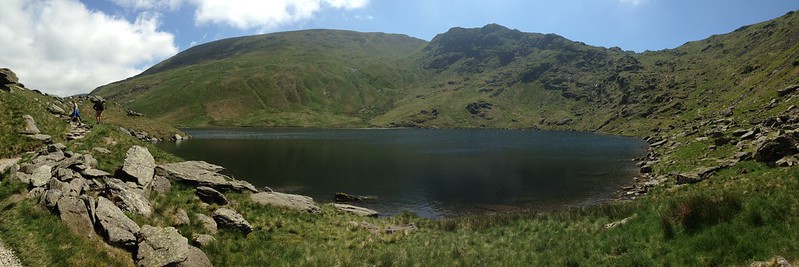
Small Water pano.

After lunch – another swim in Small Water. It being earlier in the day, we could try the north shore and still be in the sun. Here the bottom shelved even more quickly than it had on the other side, so that two strides in you were already deep enough to swim. Only me and the boys swam this time, TBH and A watched and took photos, including these which TBH took with my camera.

I don’t know why it’s never occurred to me to swim here before. With the steep slopes of Small Water Crag as a backdrop, this is an amazing place for a dip. I was reminded of a larger tarn in a similar, but larger corrie in the Pyrenees, where I swam when TBH and I were there years ago. Without a wetsuit, Little S didn’t last too long, but B and I had a good, long swim. That’s us, the tiny dots in the photo above.
We weren’t the only ones enjoying a swim: we repeatedly saw fish jumping out of the water. Probably after these fellows…
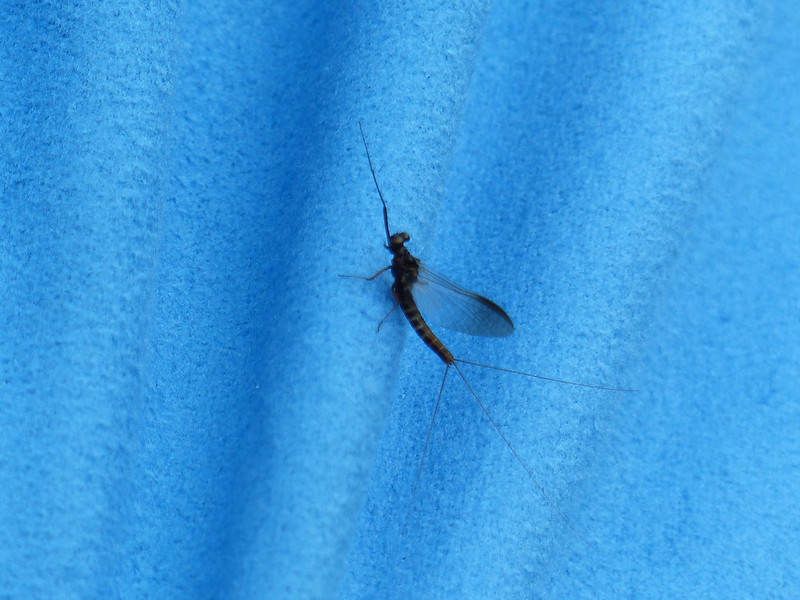
Mayfly piggybacking on my towel.
After that it was just a question of packing up and retracing the short walk back to the car.
Sadly, one further bit of excitement as we walked down – a herd of sheep went hurtling past us down the hillside with a collie in close pursuit. The sheep gradually split into smaller and smaller groups until the collie was only chasing three, then just one lamb. They were quickly way below us, but I could see that the dog had the lamb cornered against a wall. Still barking furiously, the dog had the sheep turning repeatedly back and forth, back and forth. We carried on down and, when we reached the same wall, I dumped my bag and started to make my way around towards the pair of them. I tried to discourage Little S from joining me, not knowing what frame of mind the dog would be in, but he went racing off and soon B had joined us too. We realised that they’d moved on again and the sheep was in Blea Water Beck, trapped against the fence which continued the line of the wall across the beck. As we neared the stream, Little S, anxious to help the lamb, went haring off ahead, disappearing over a slight rise. He reappeared seconds later, at quite a lick, looking more than a little alarmed.
“The dog’s after me, the dog’s after me.”
It was only a small collie, dripping wet, it had clearly been in the stream. It took one look at me and turned to run back up the hill to its owners. The lamb didn’t seem to be hurt in any obvious way, but nor did it want to budge from it’s position, backed against the fence at the edge of the stream. We left it, and later saw it head up the hill to rejoin the flock. We also saw the feckless dog owners, with the collie now back on a lead, approaching the car park, but chose to head to Shap chippy for some tea rather than staying to get into a row with them.


